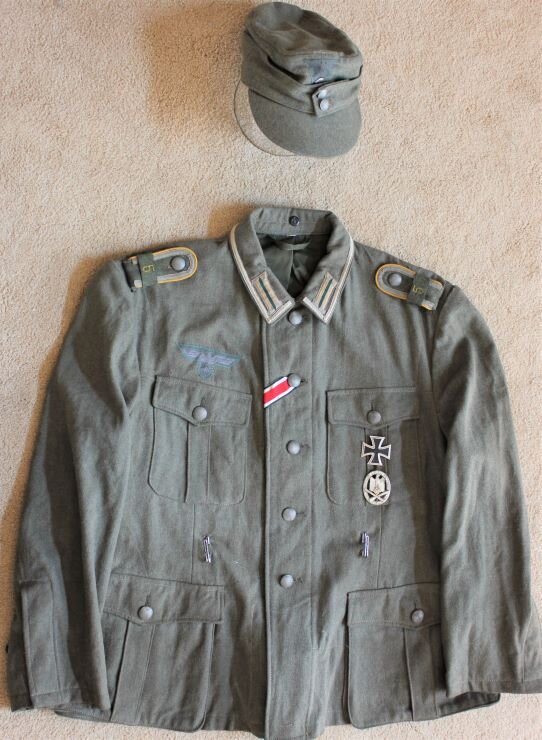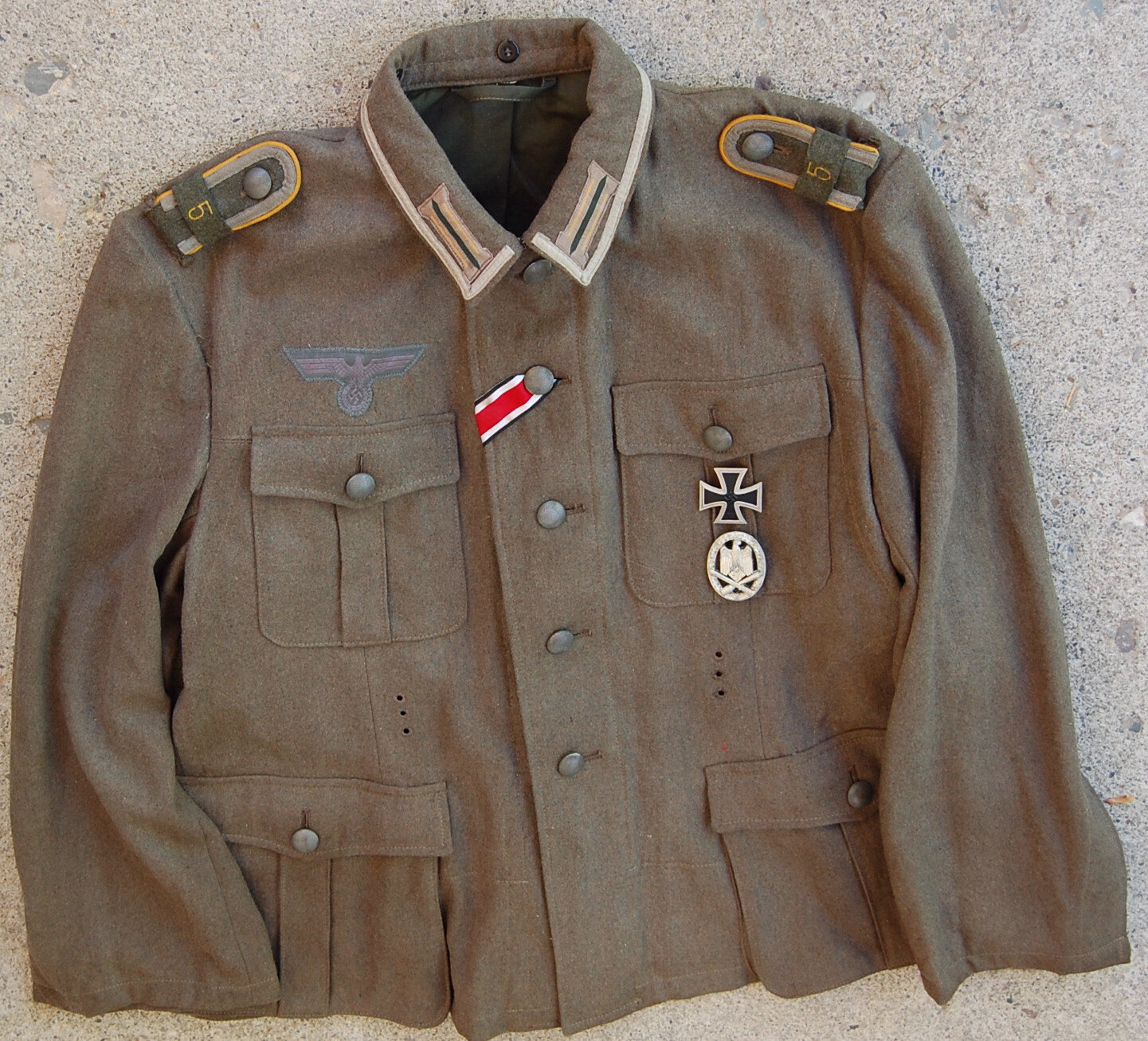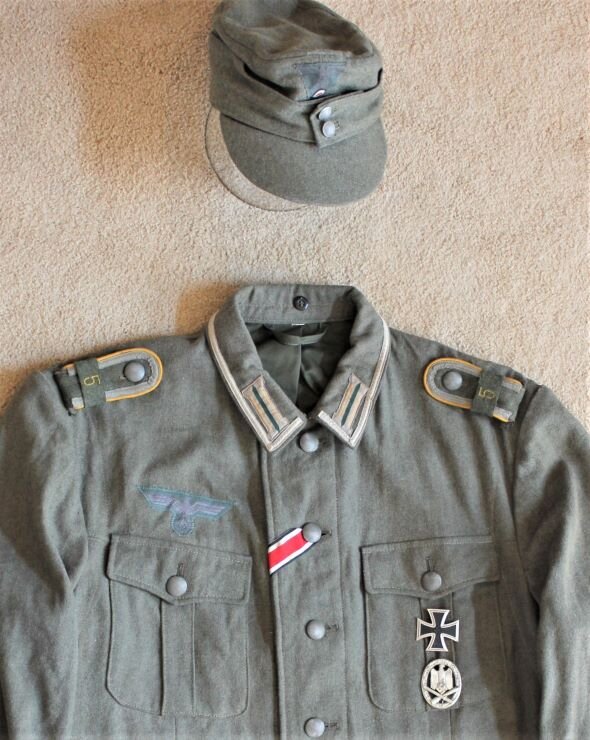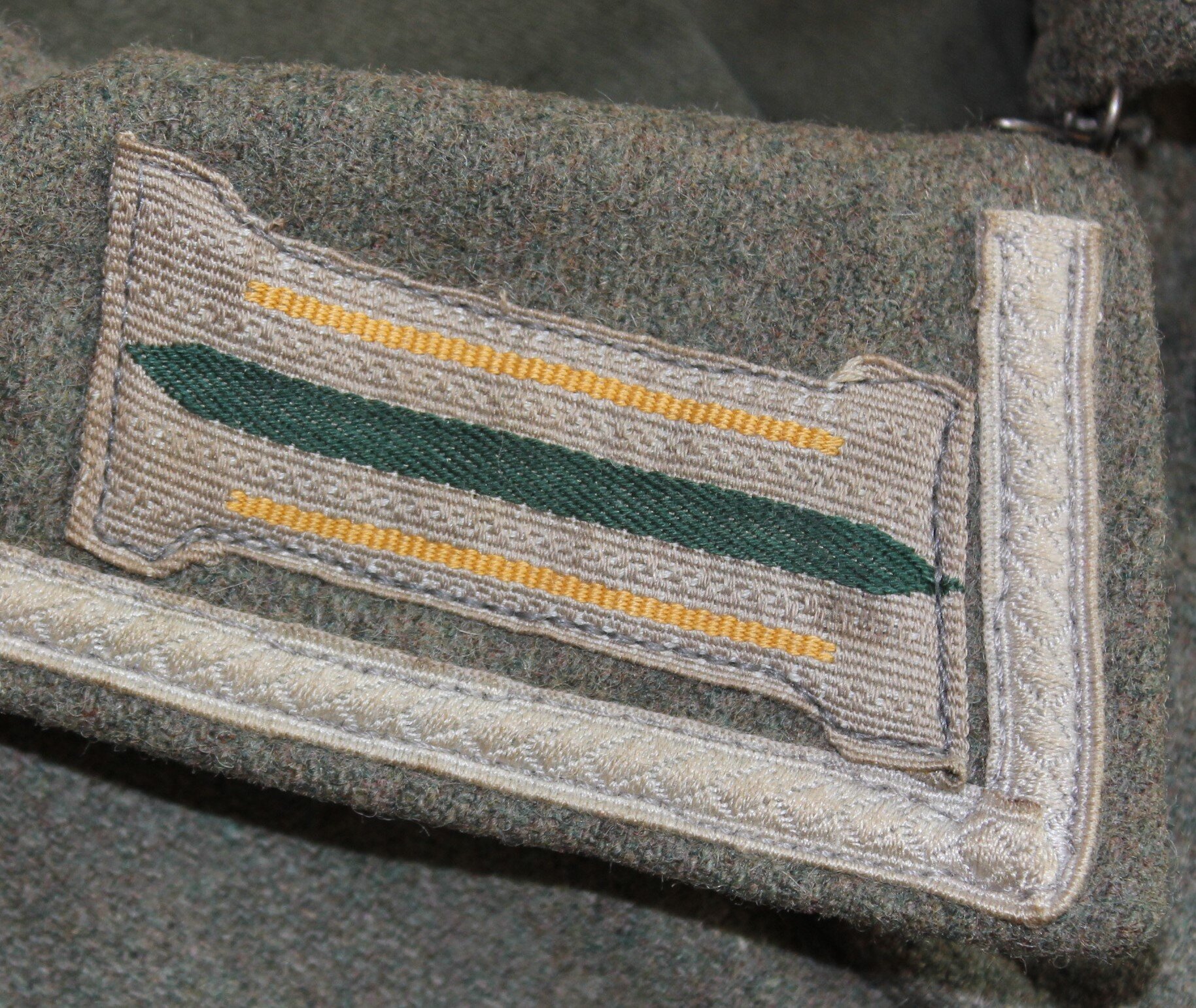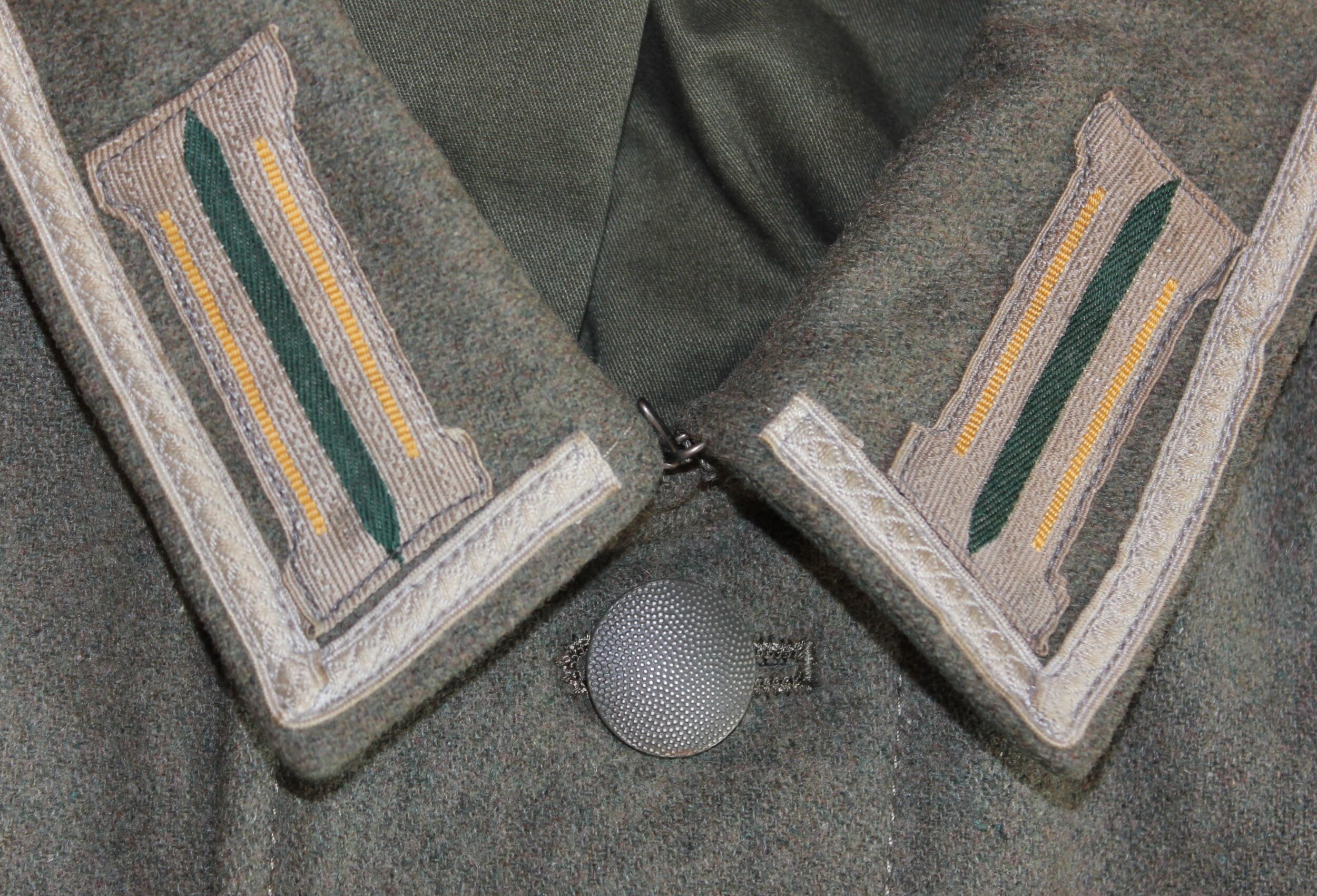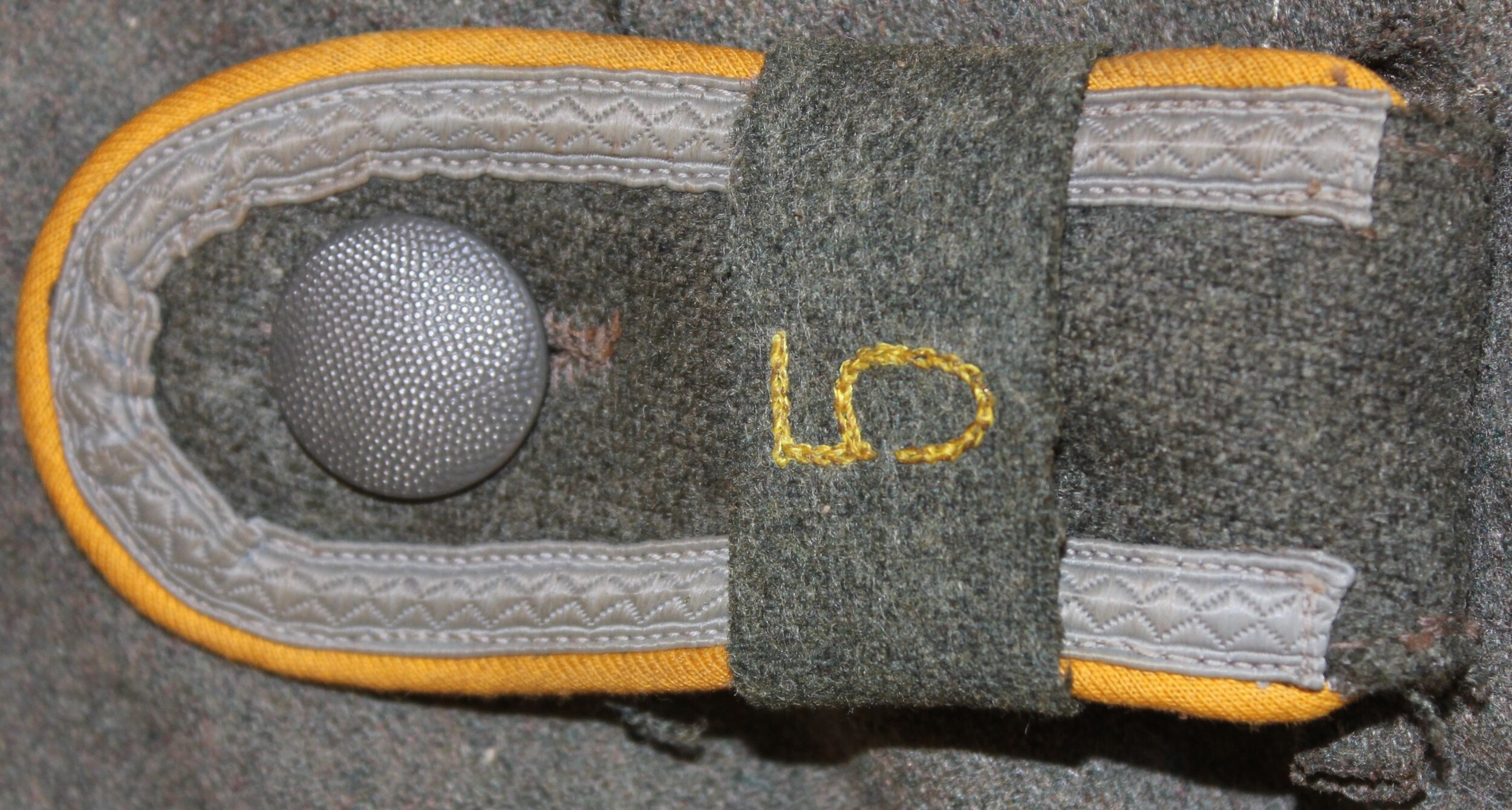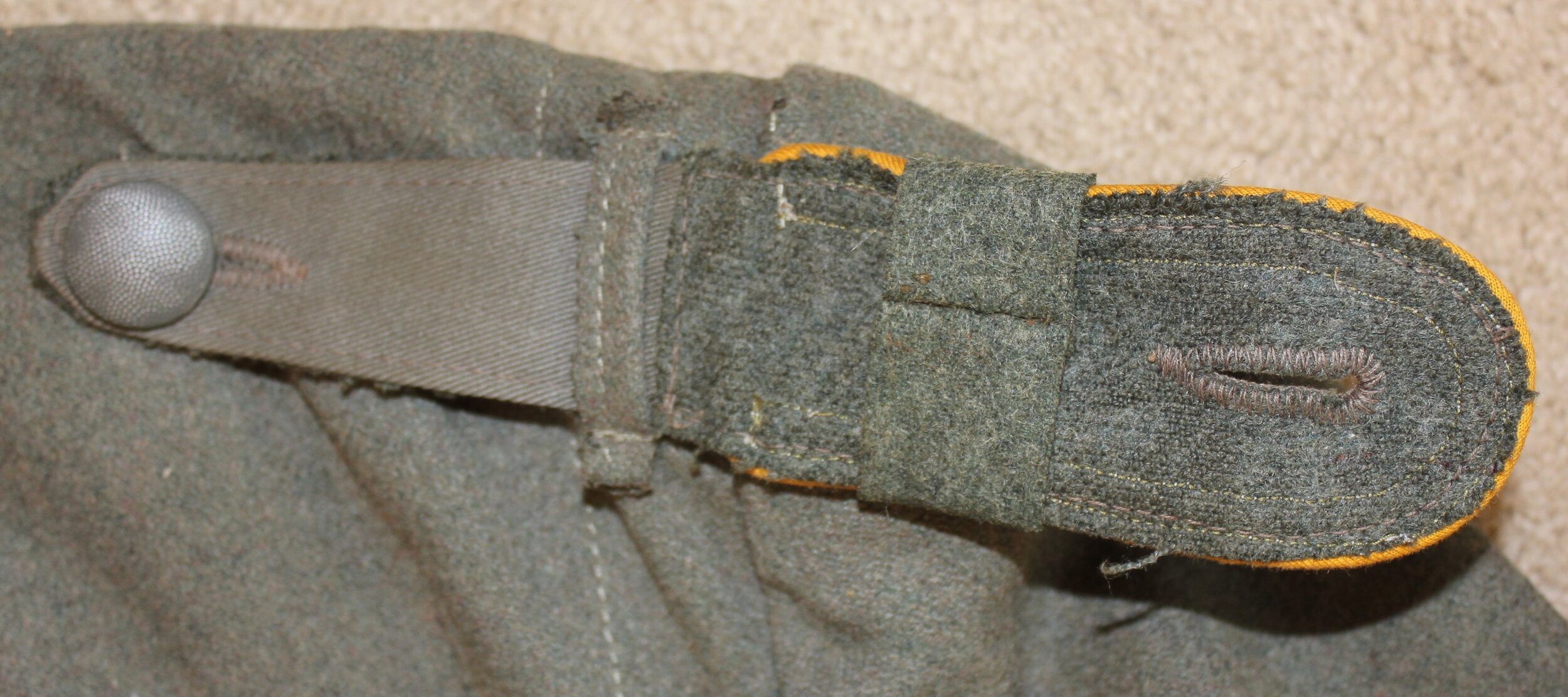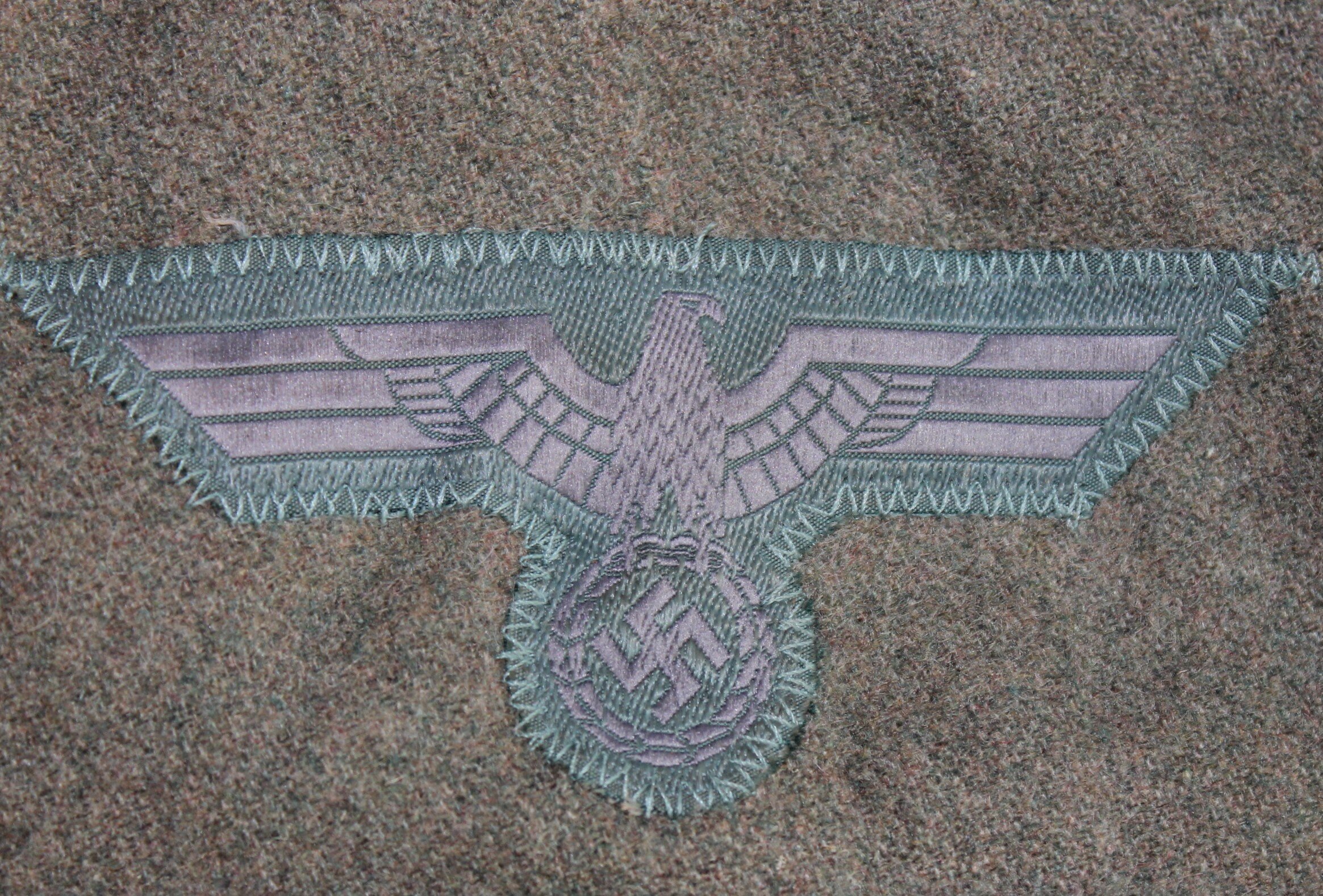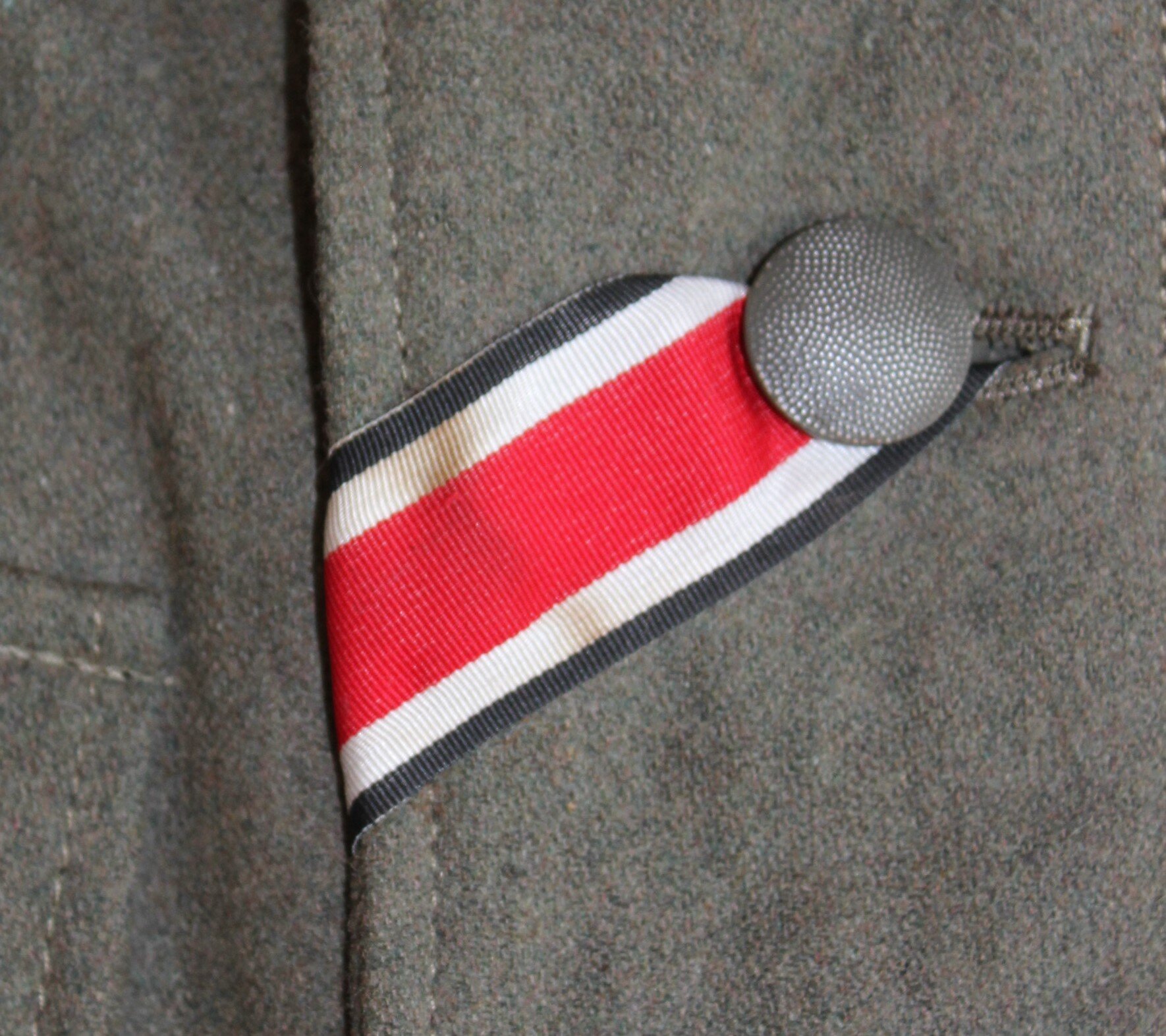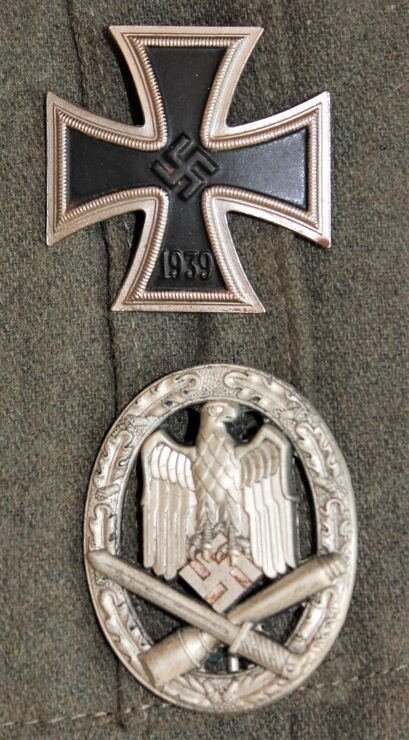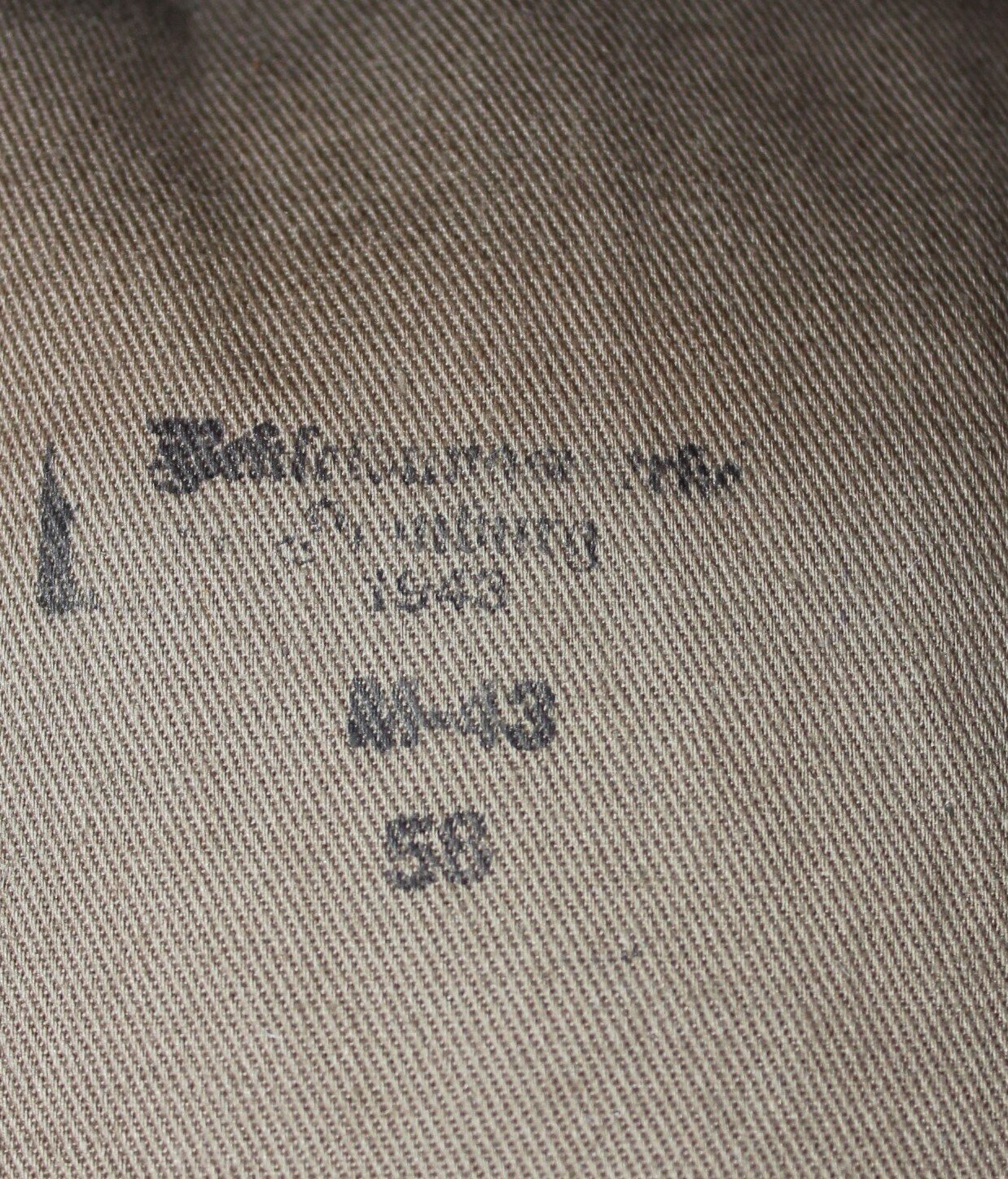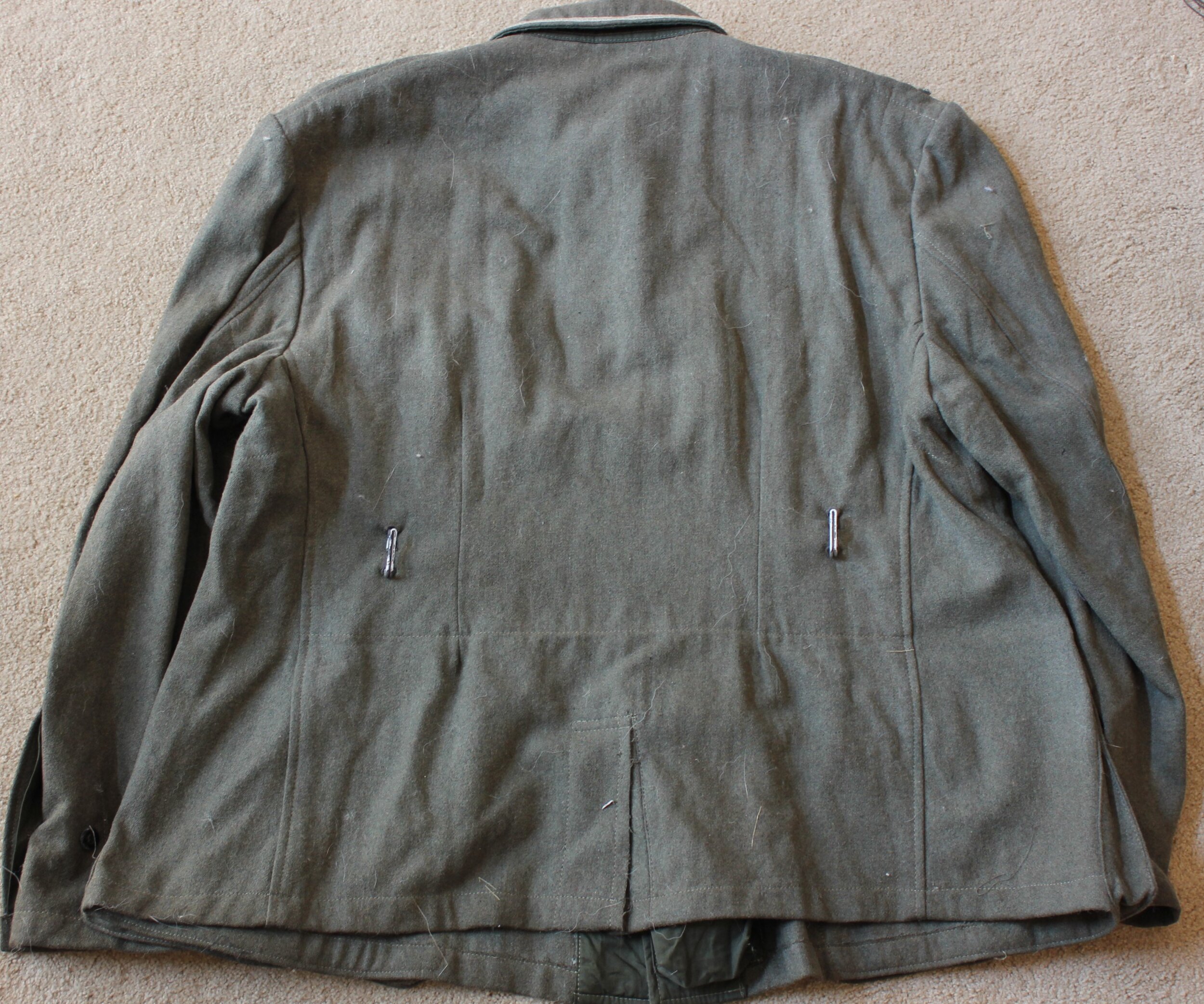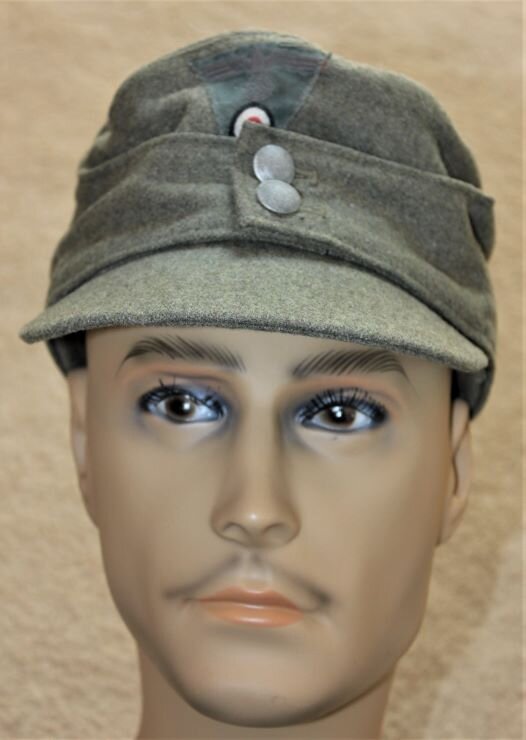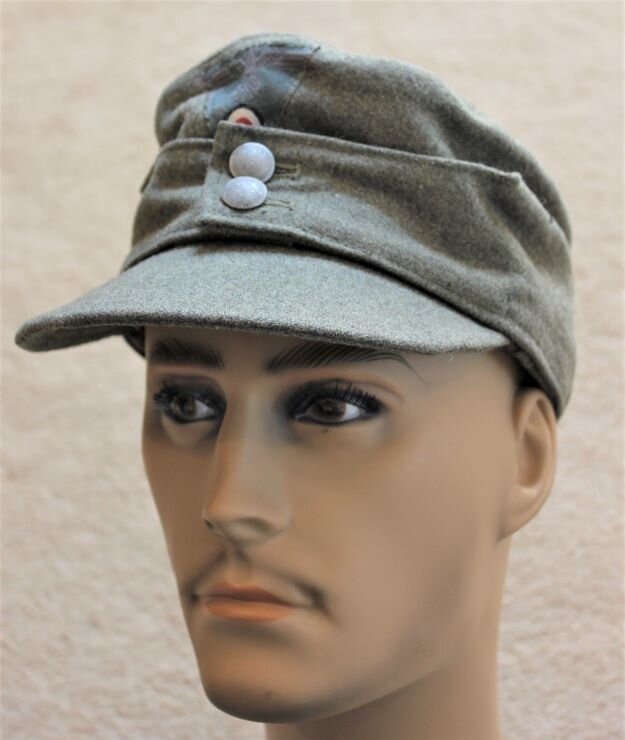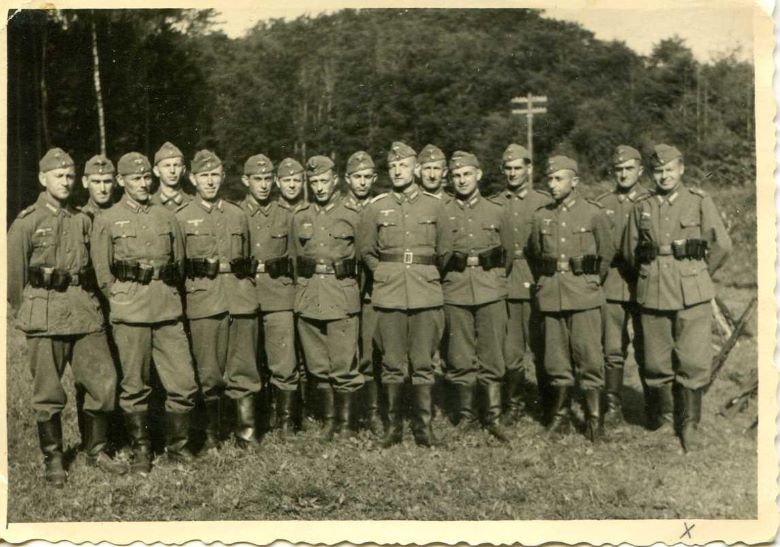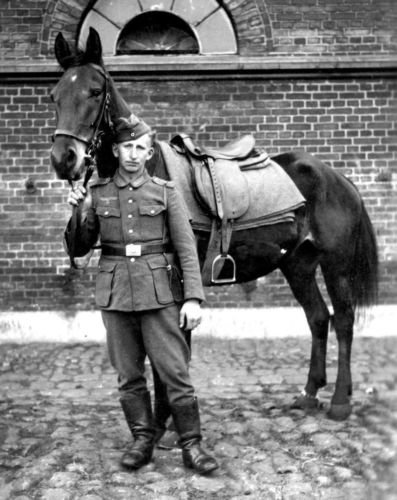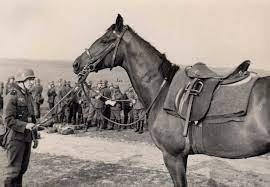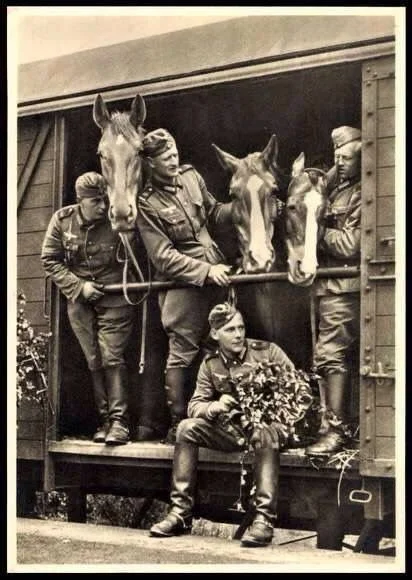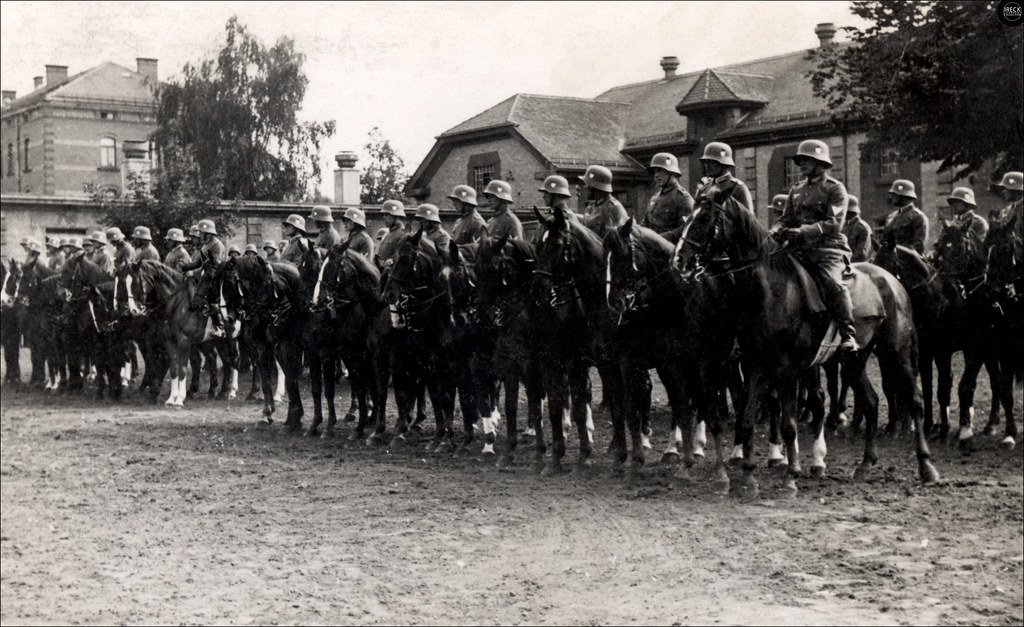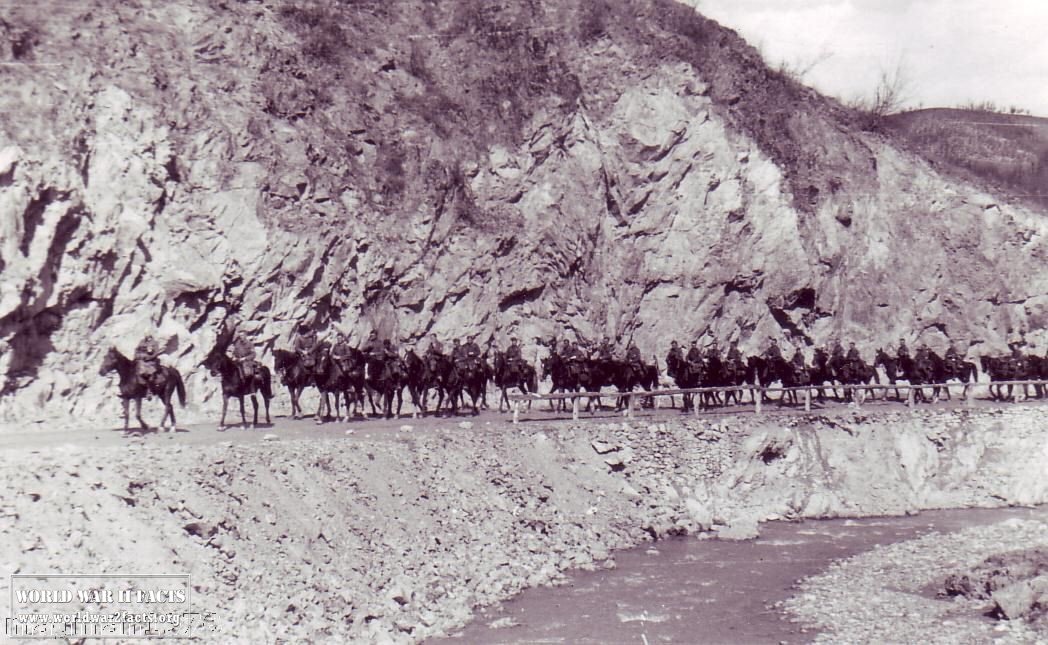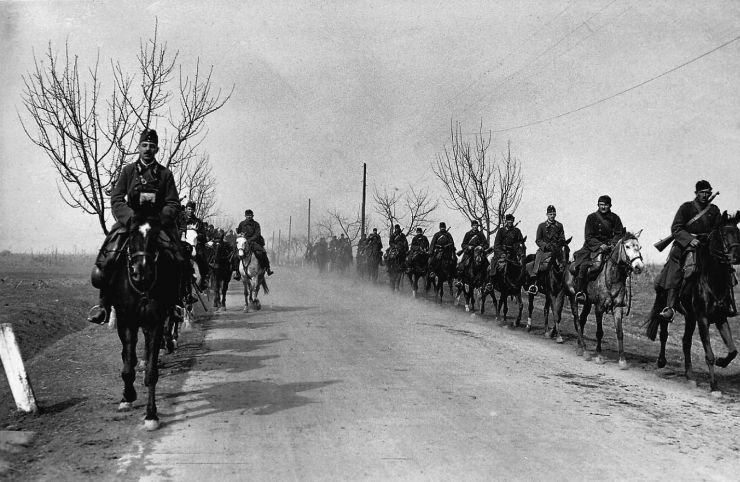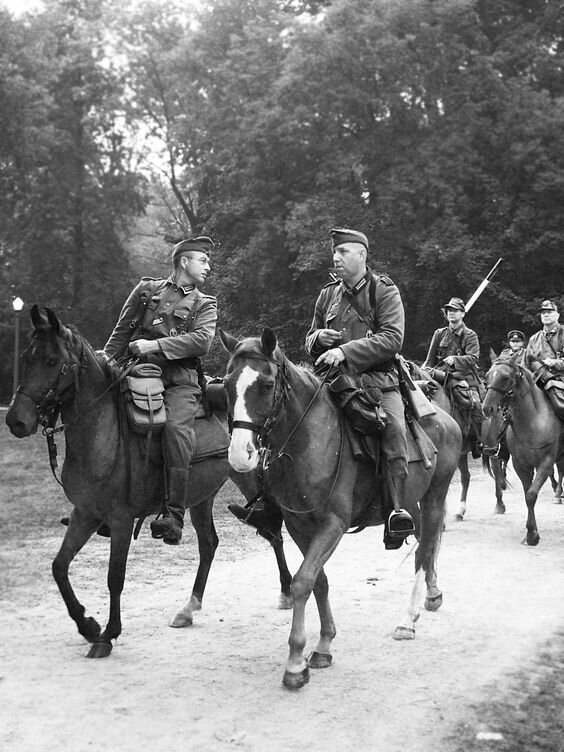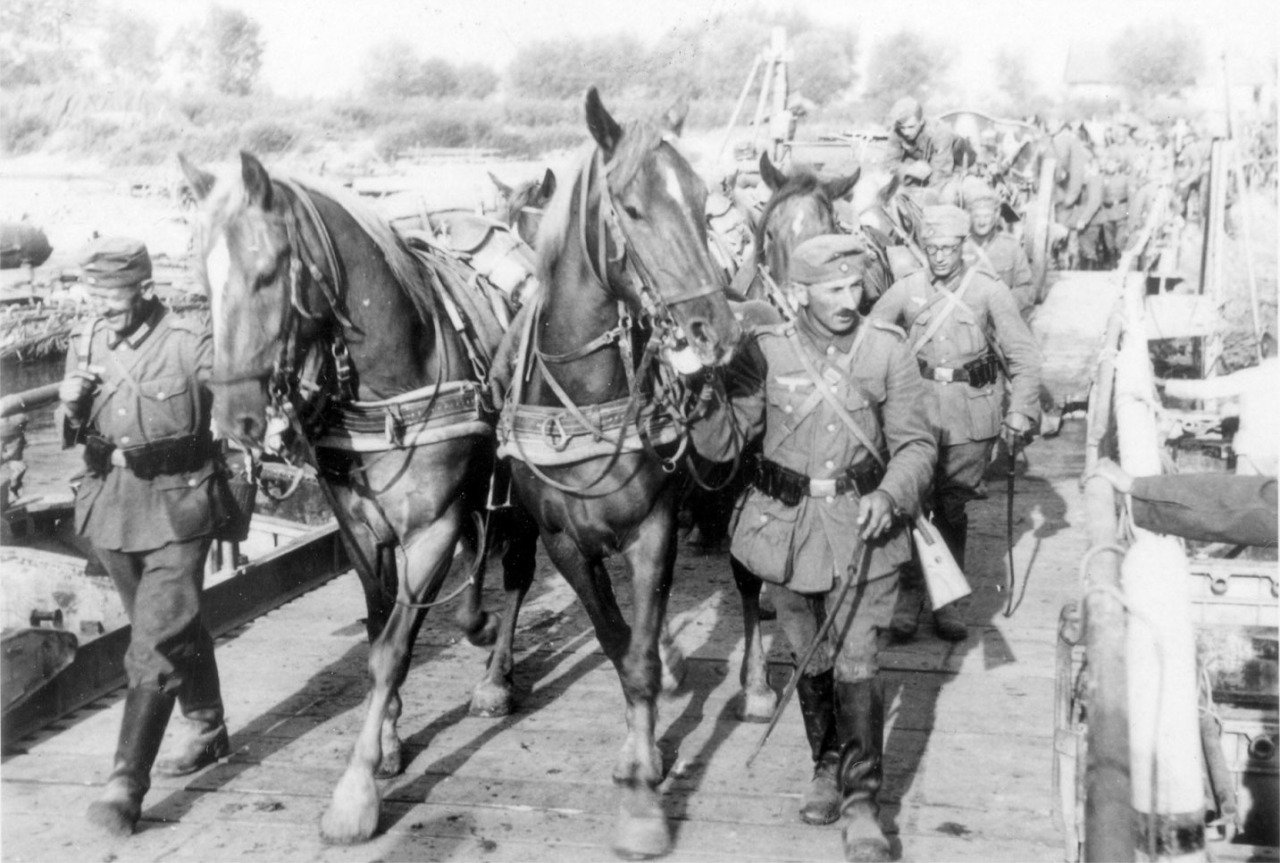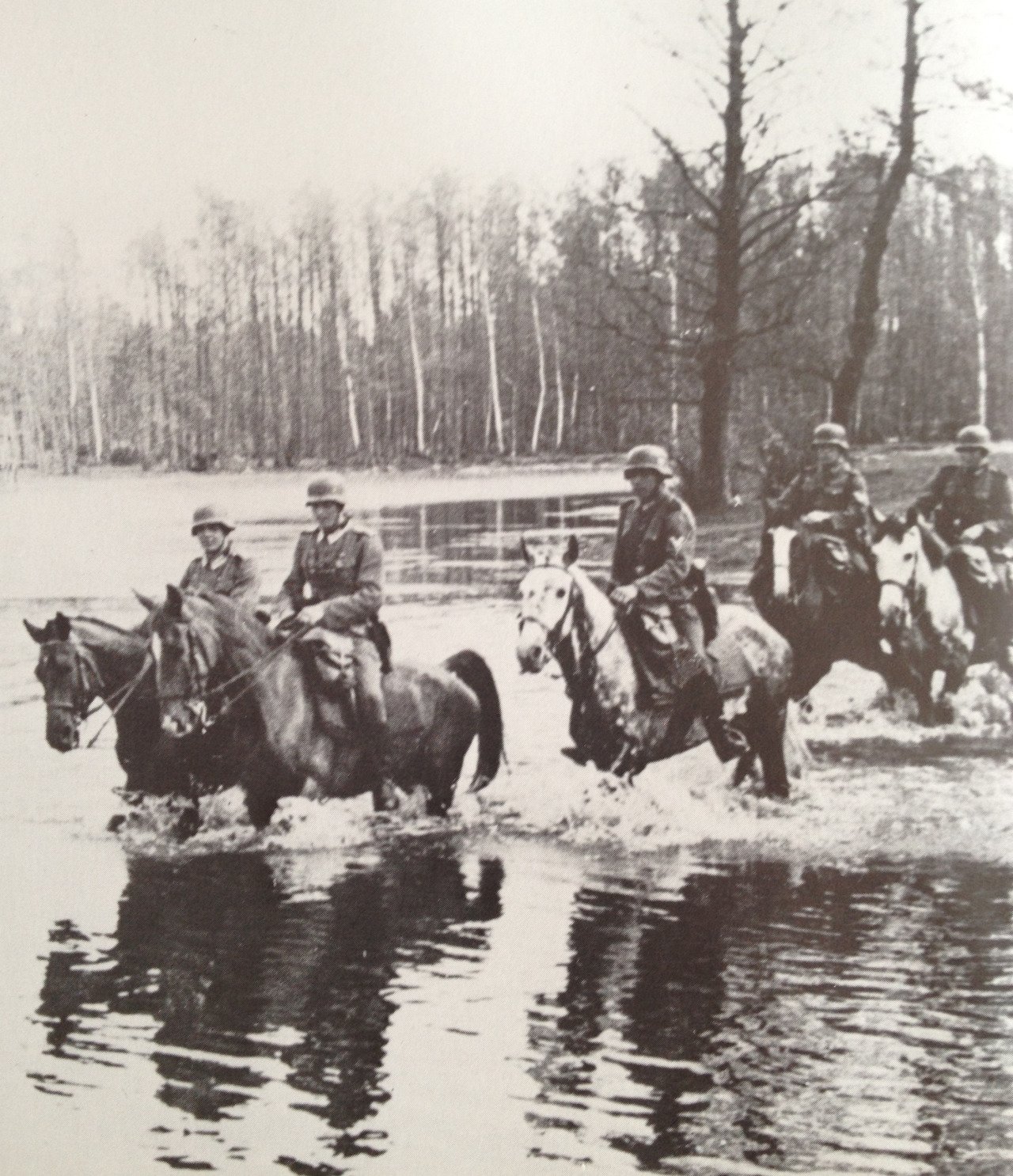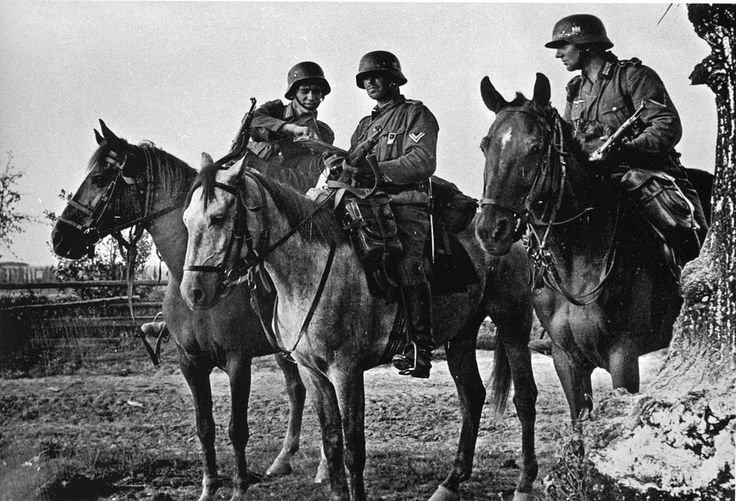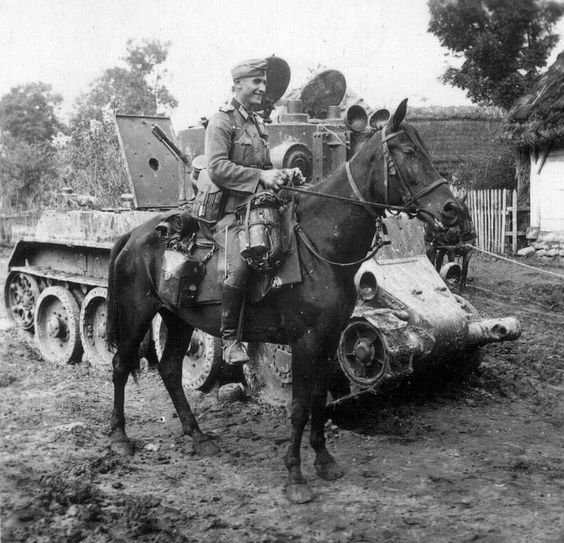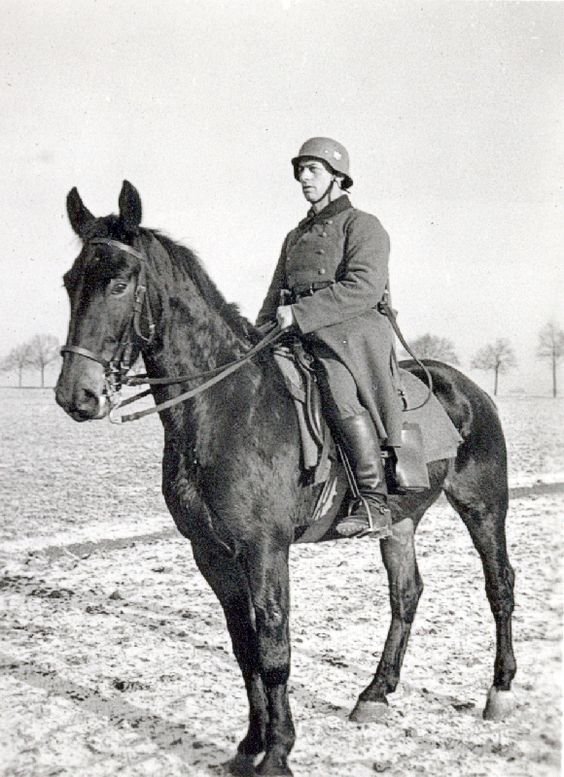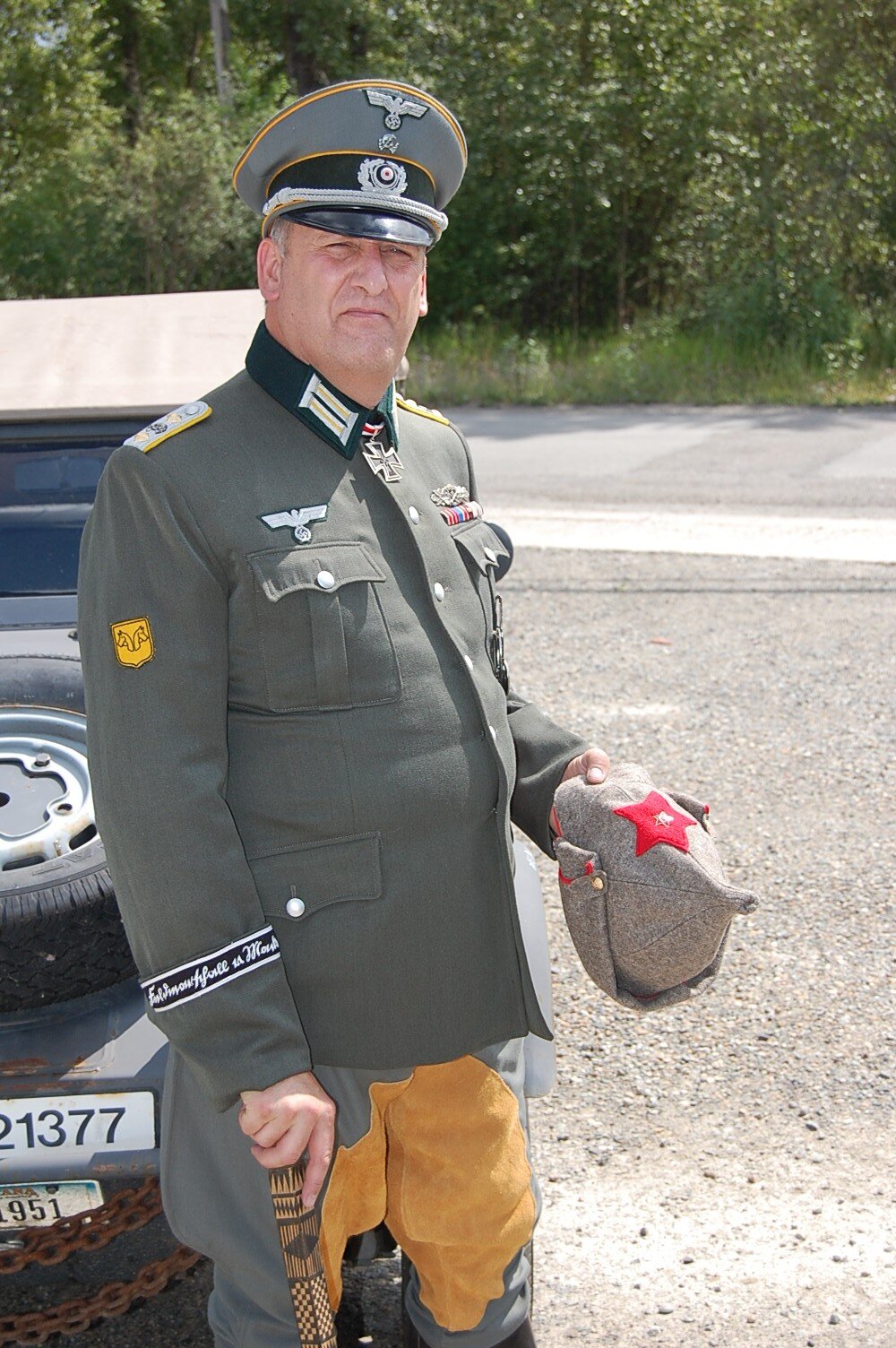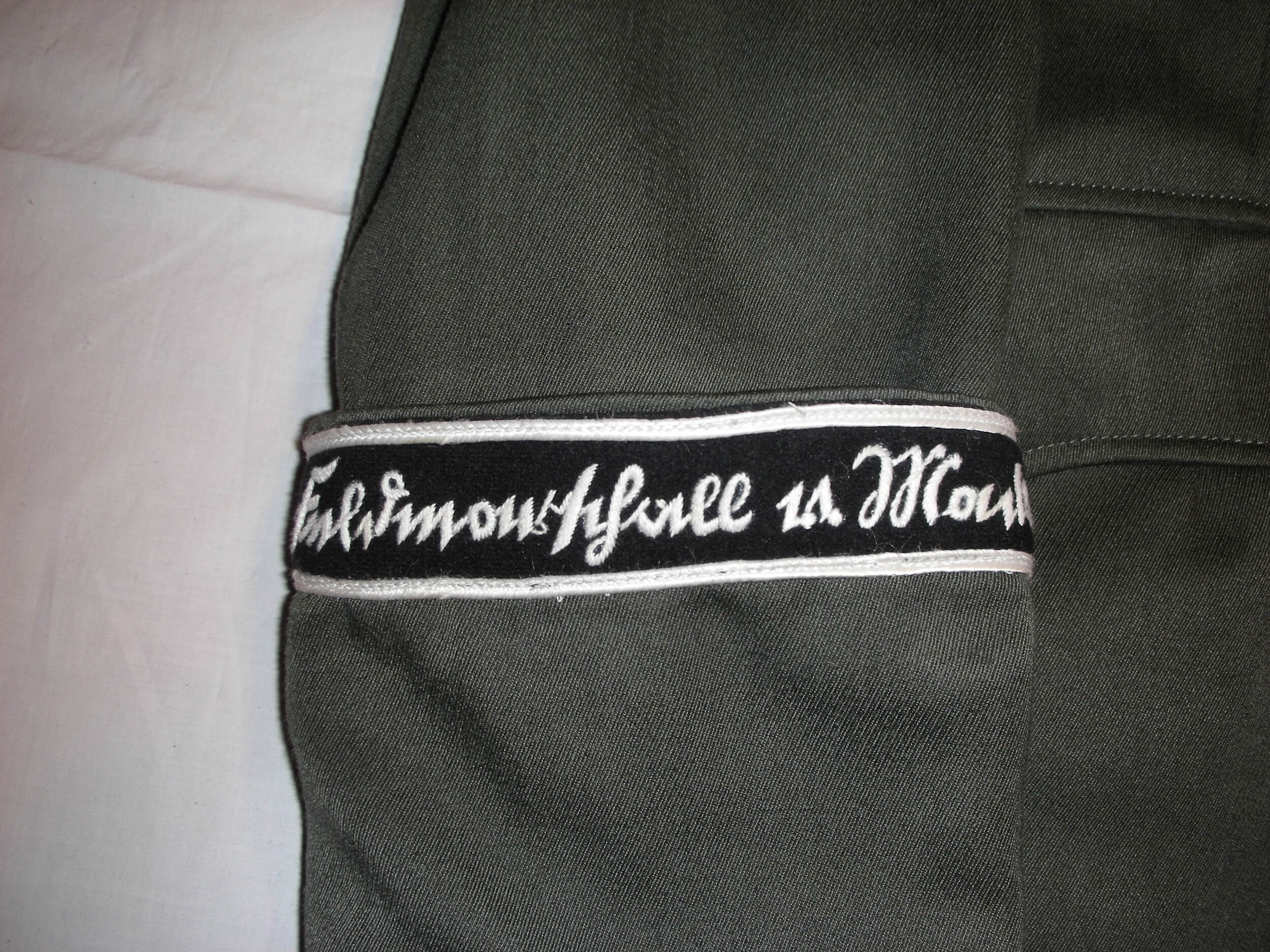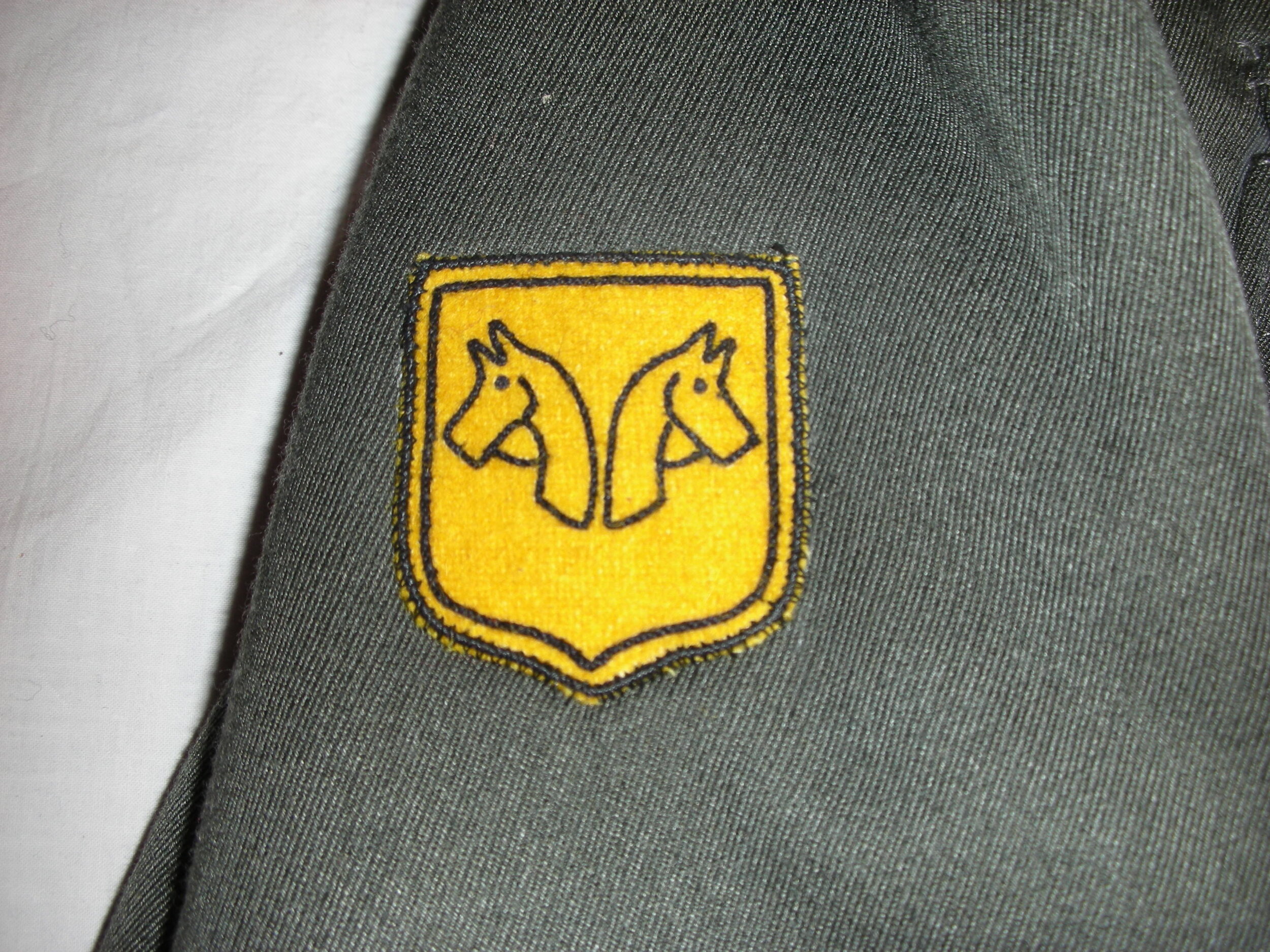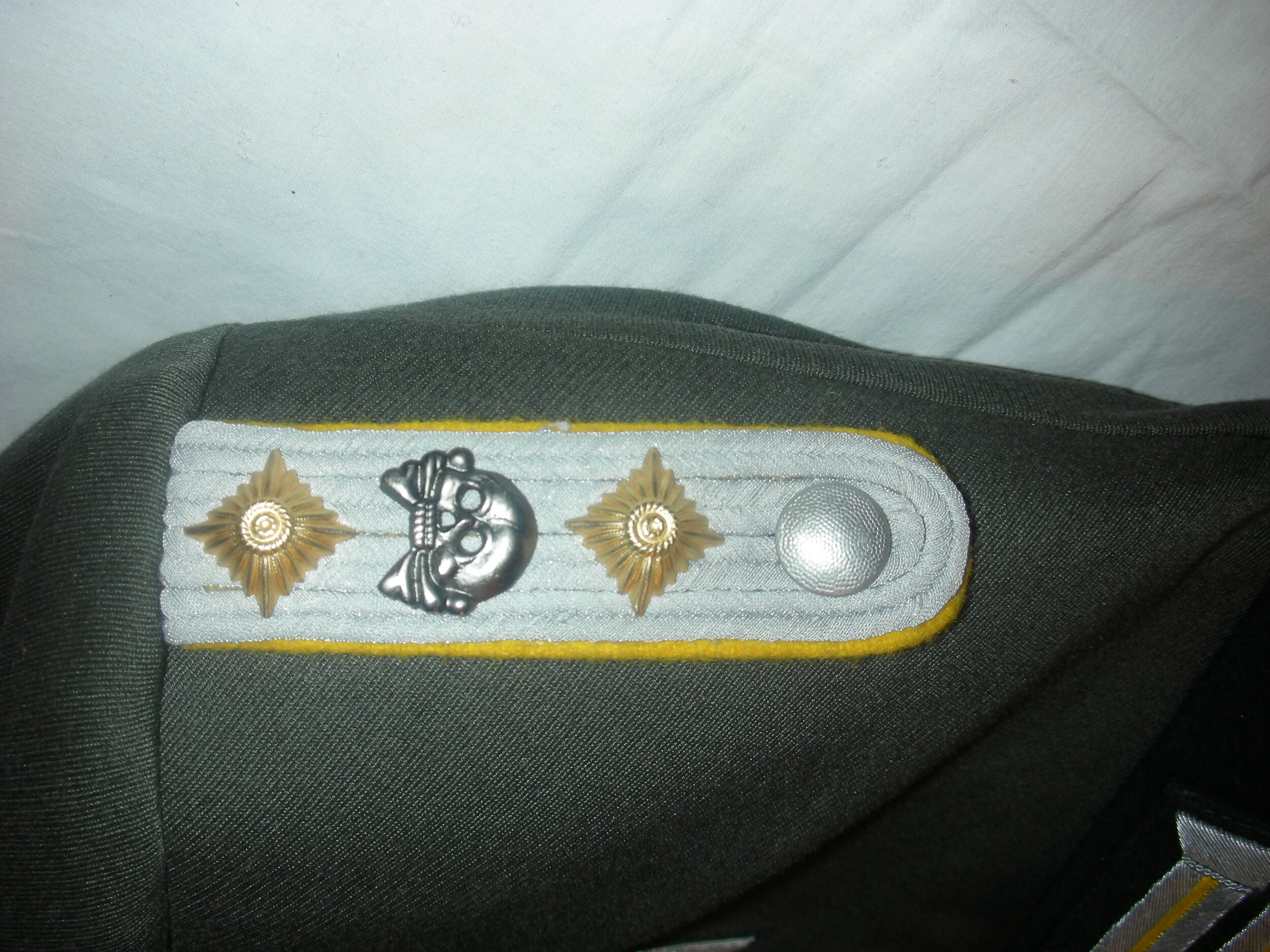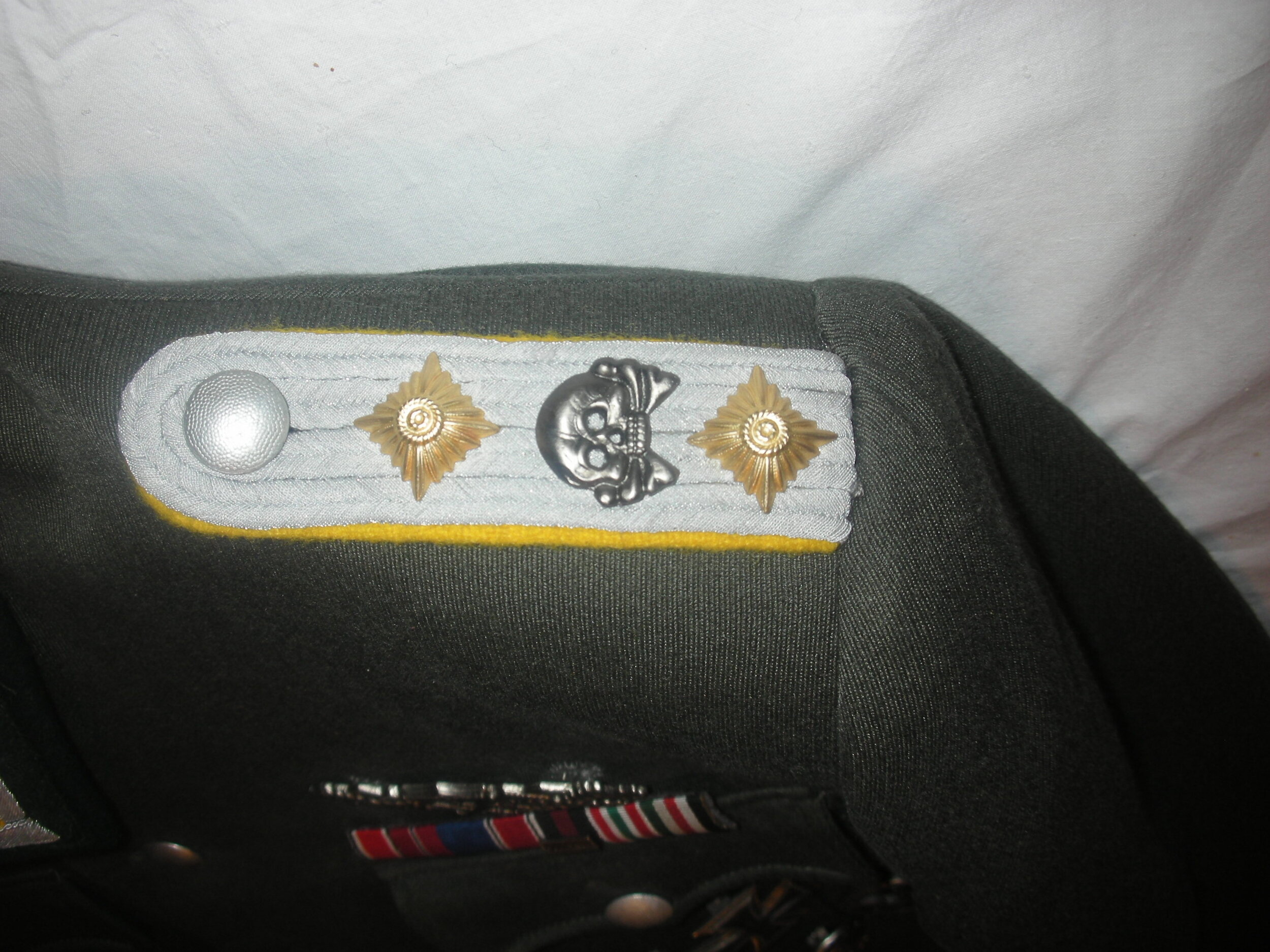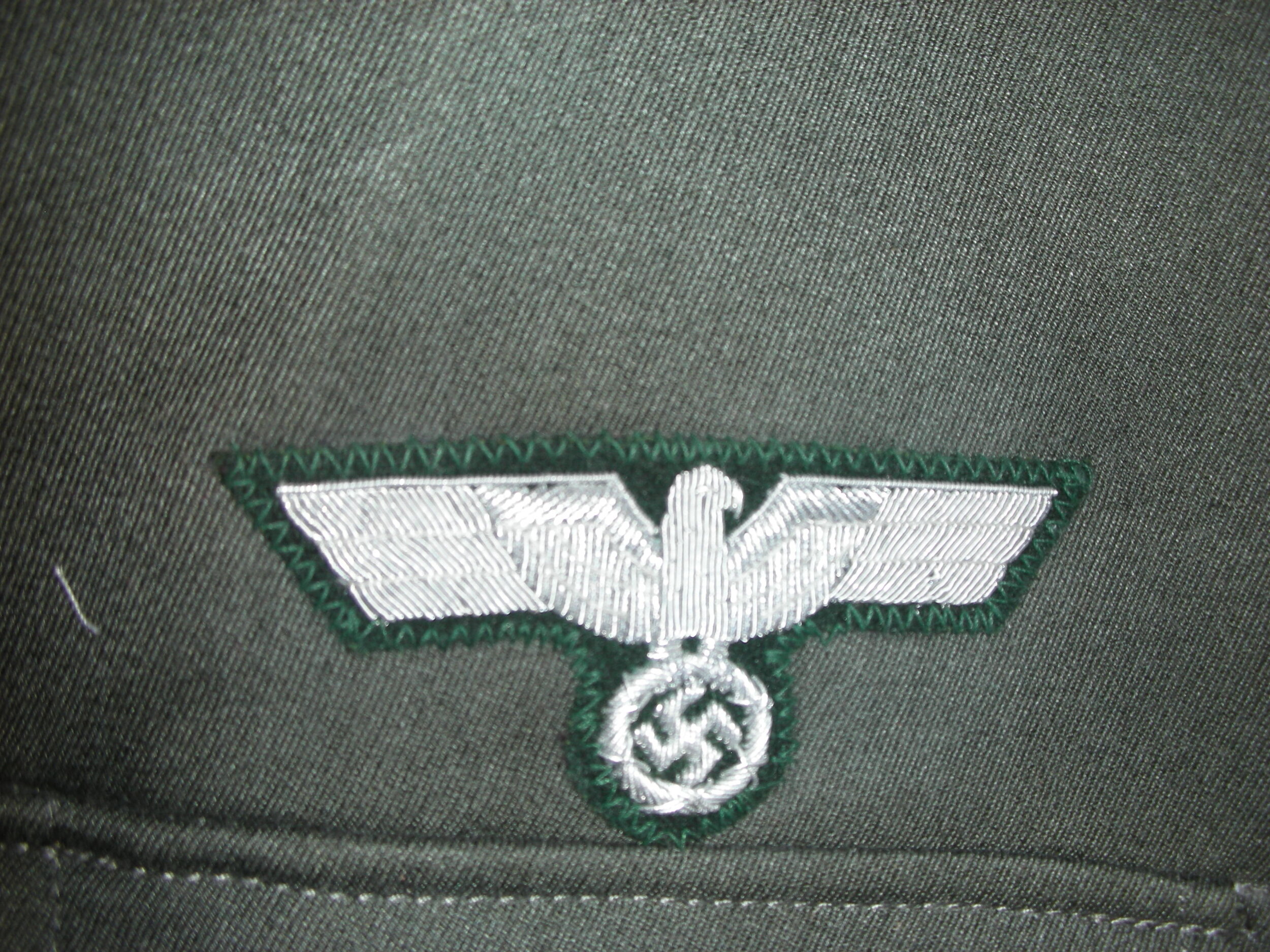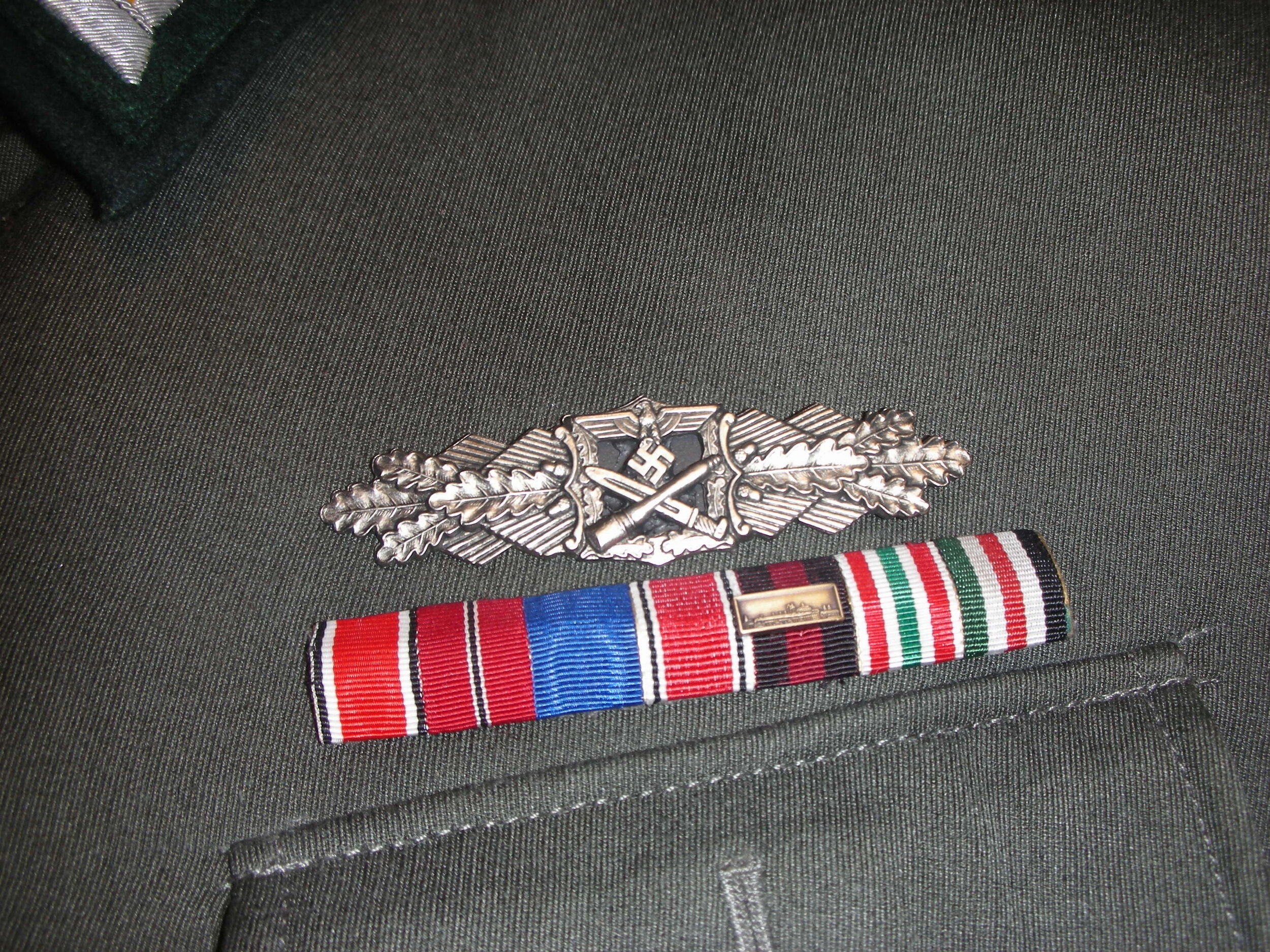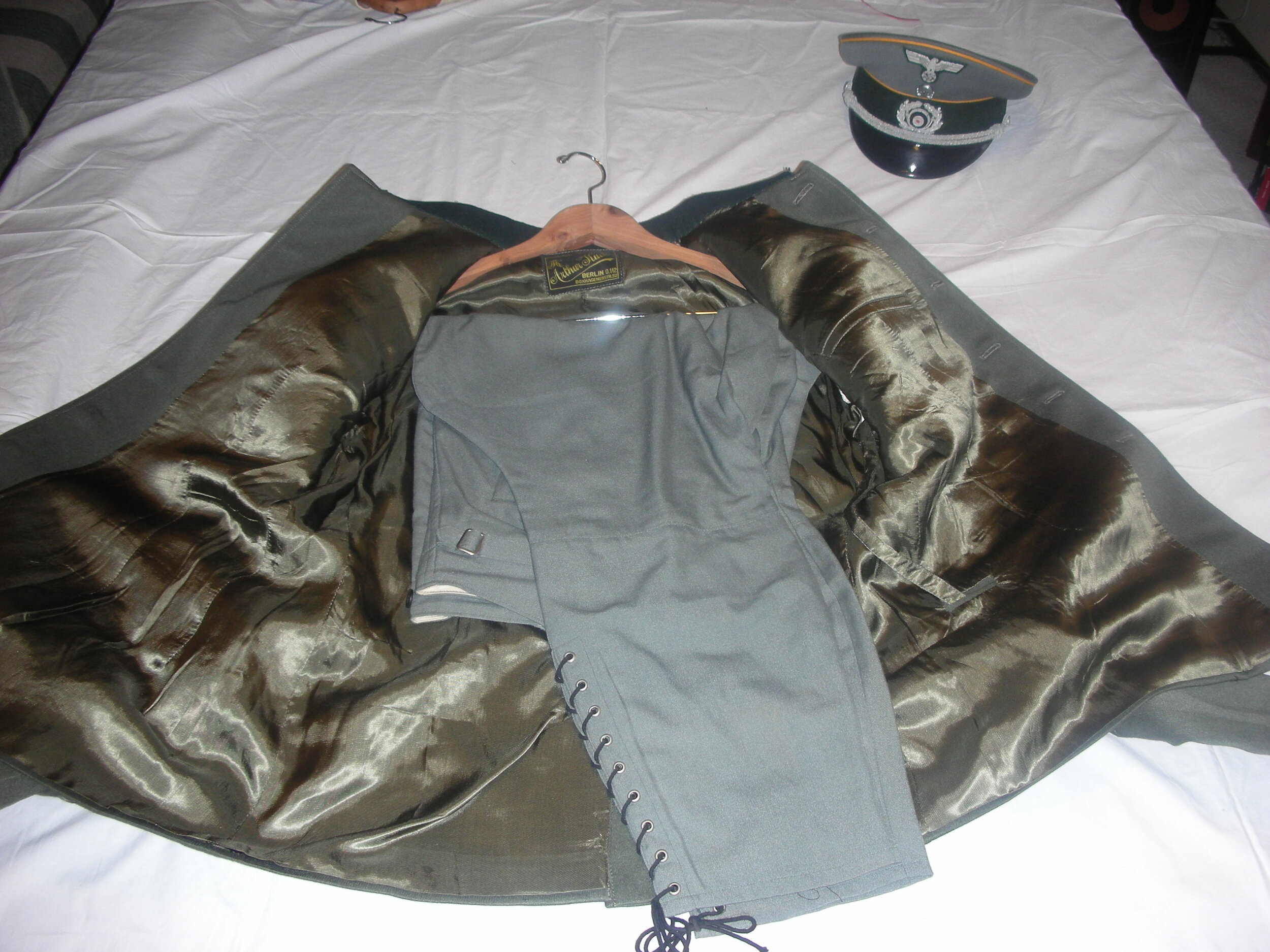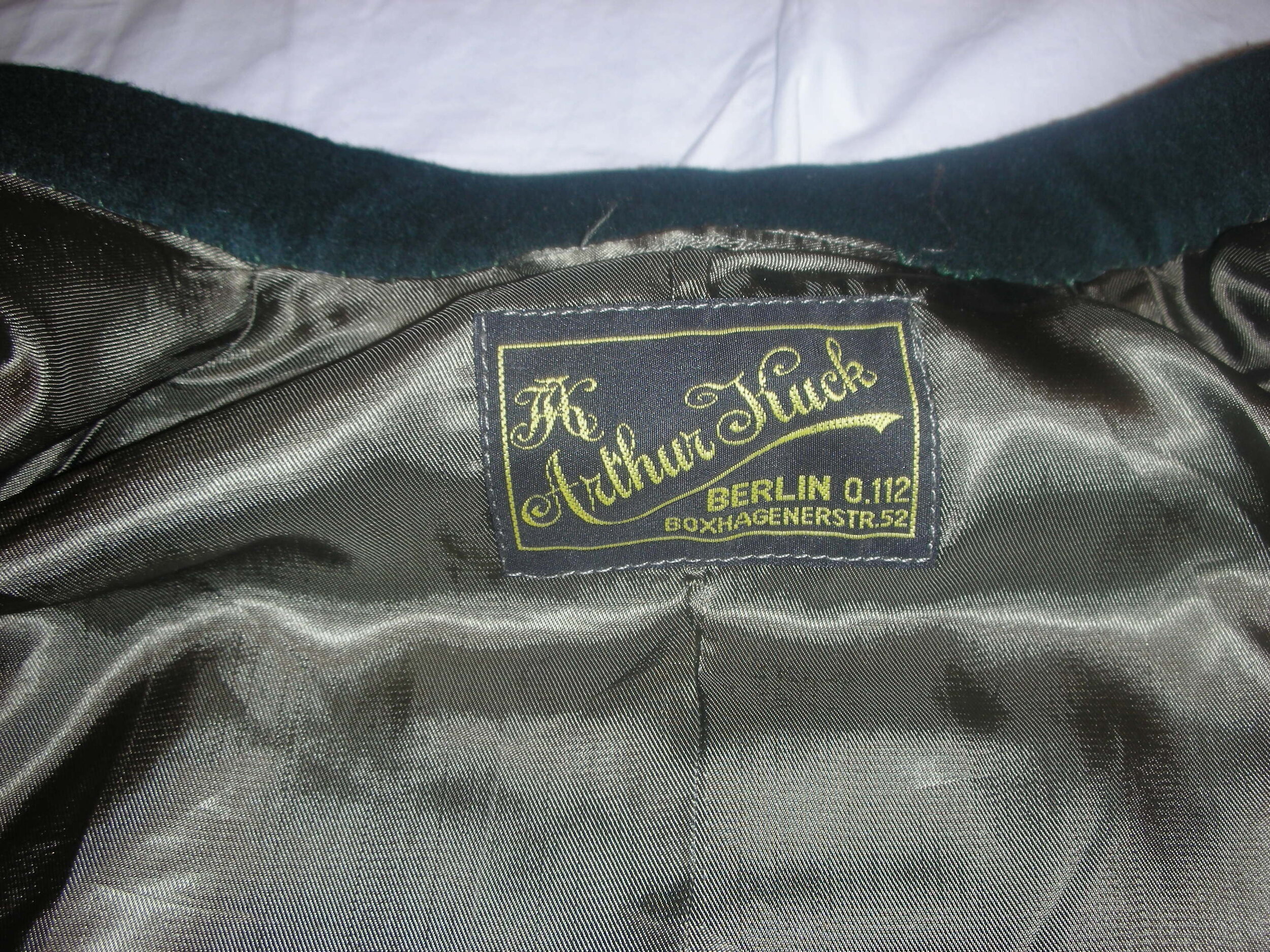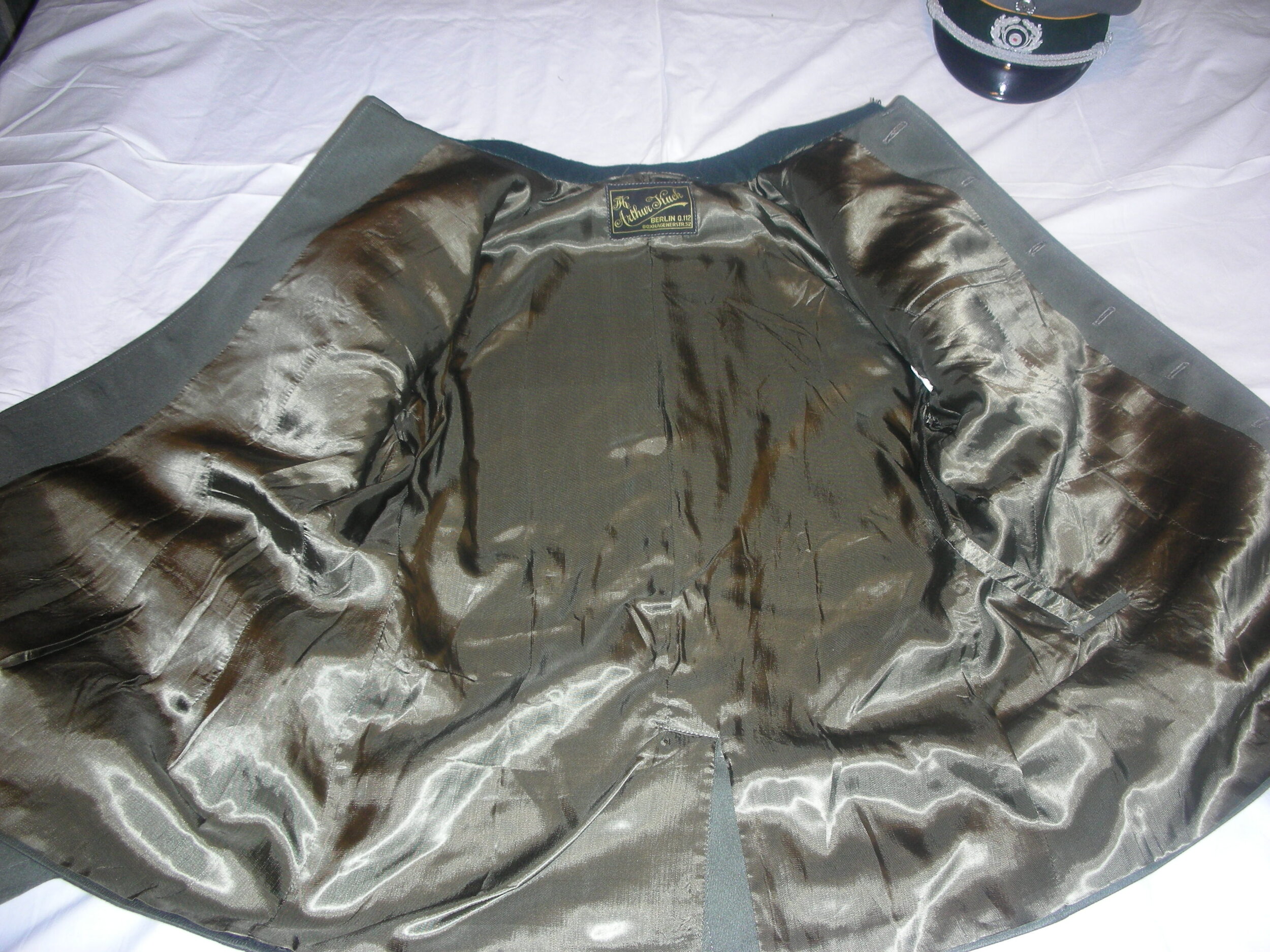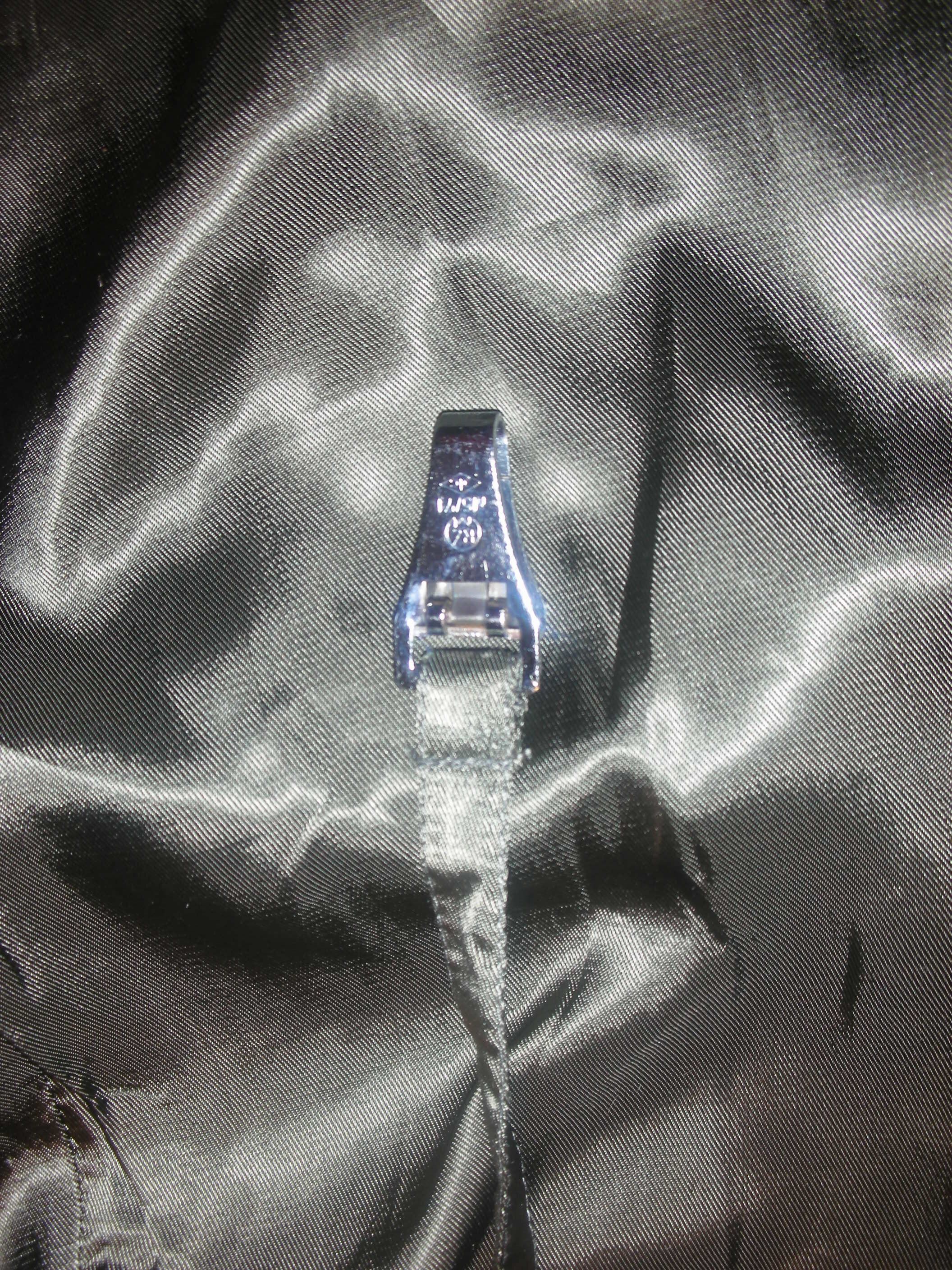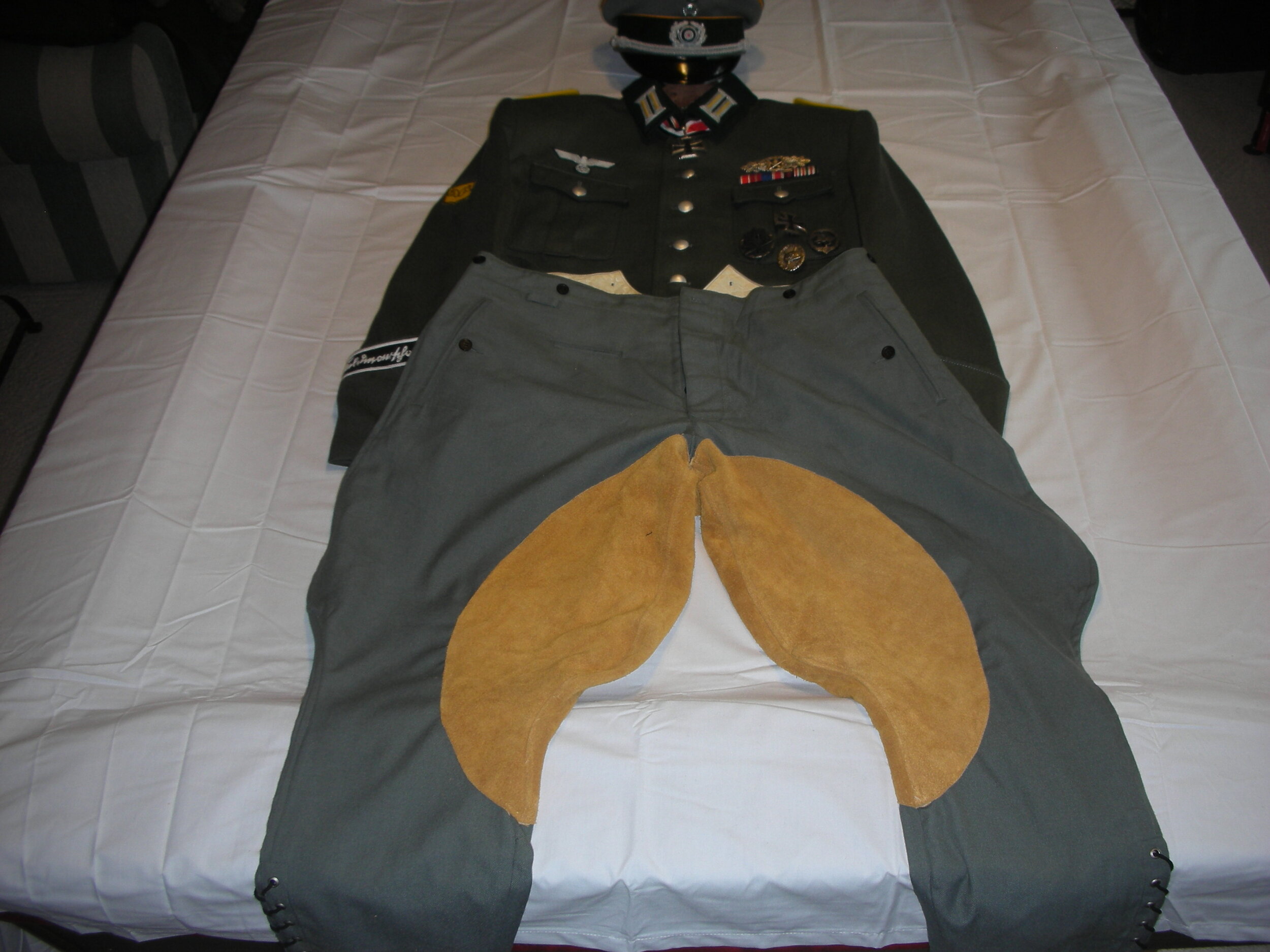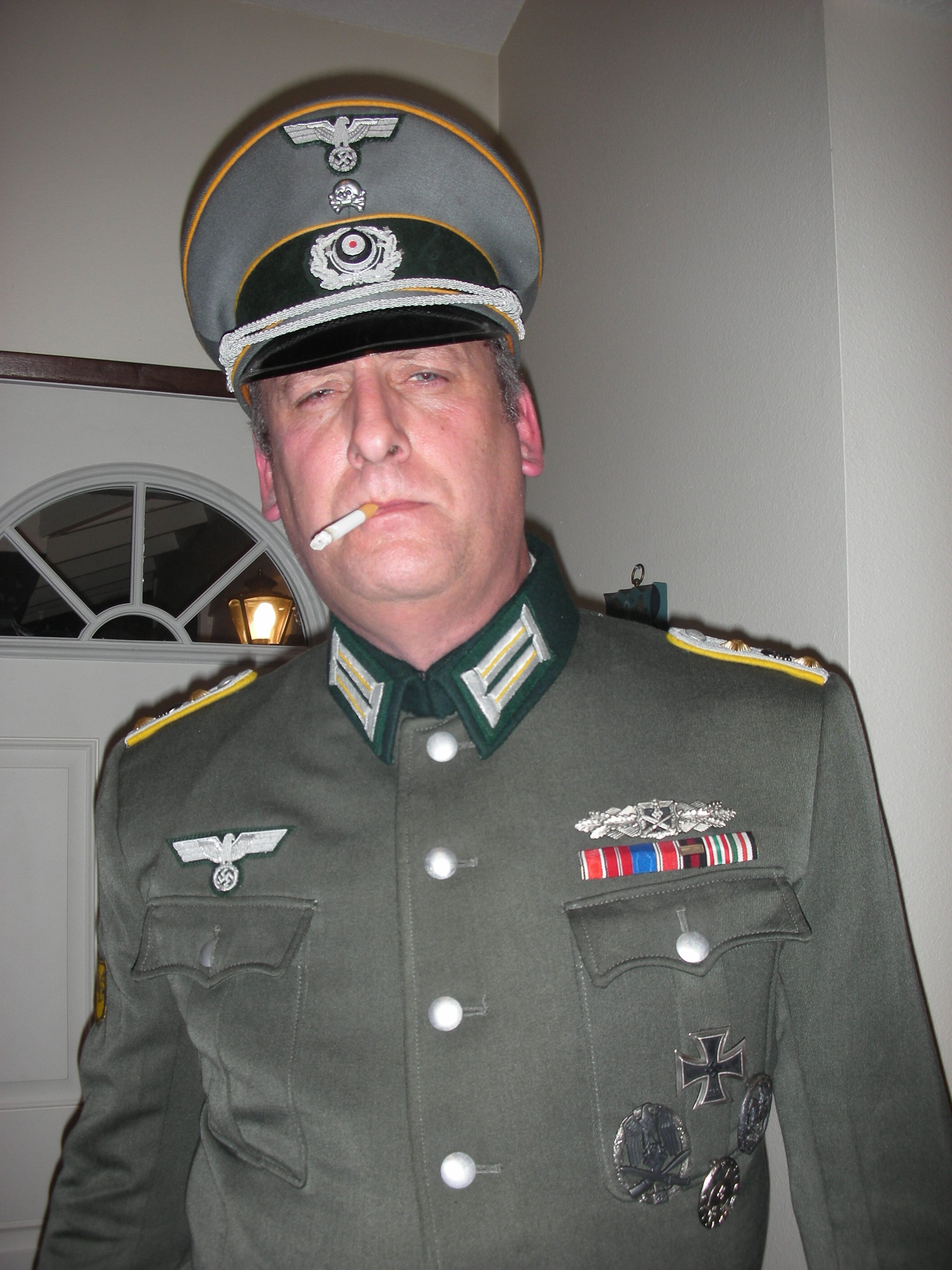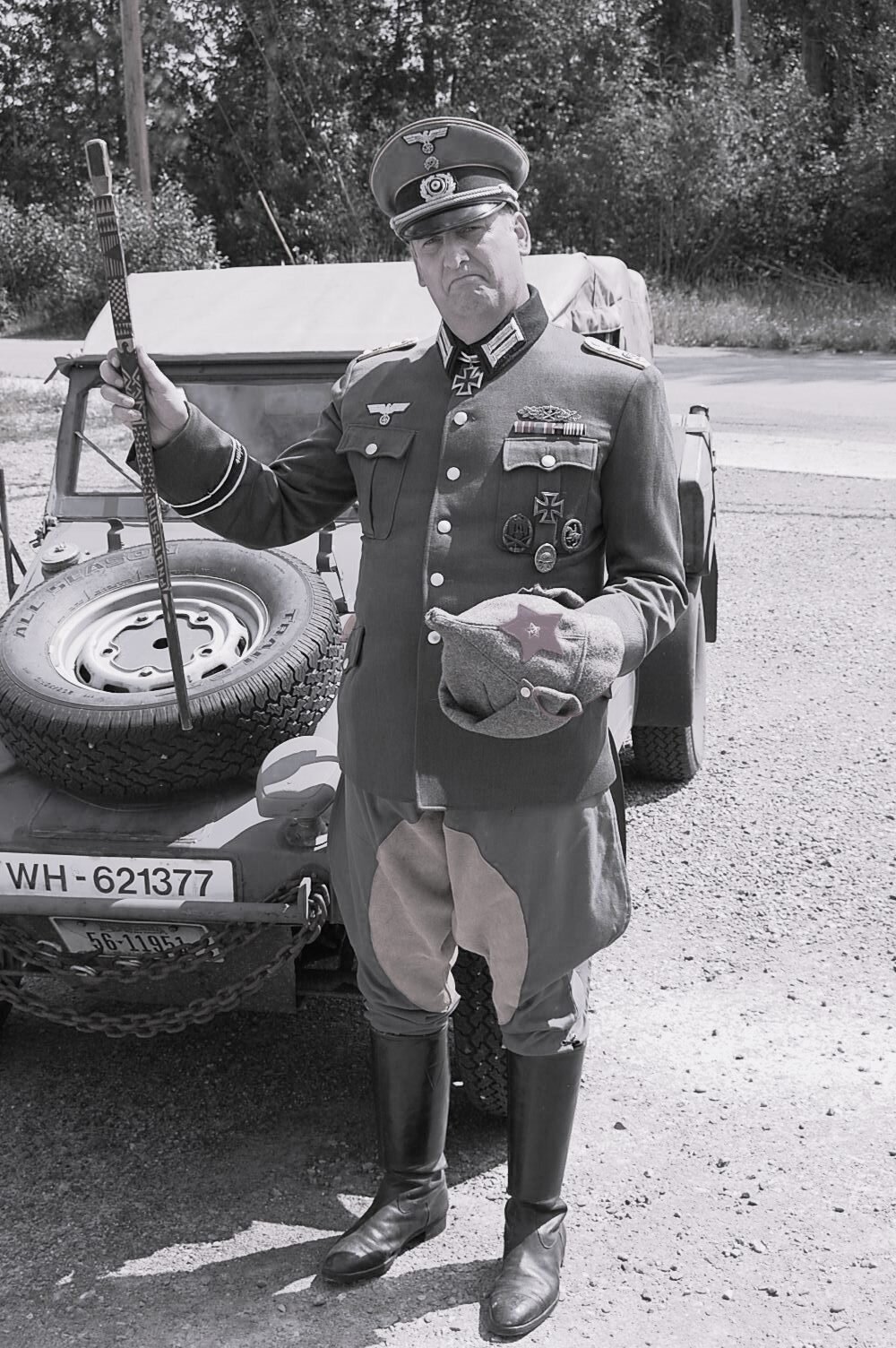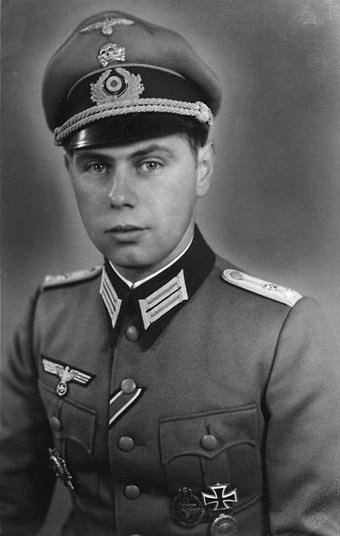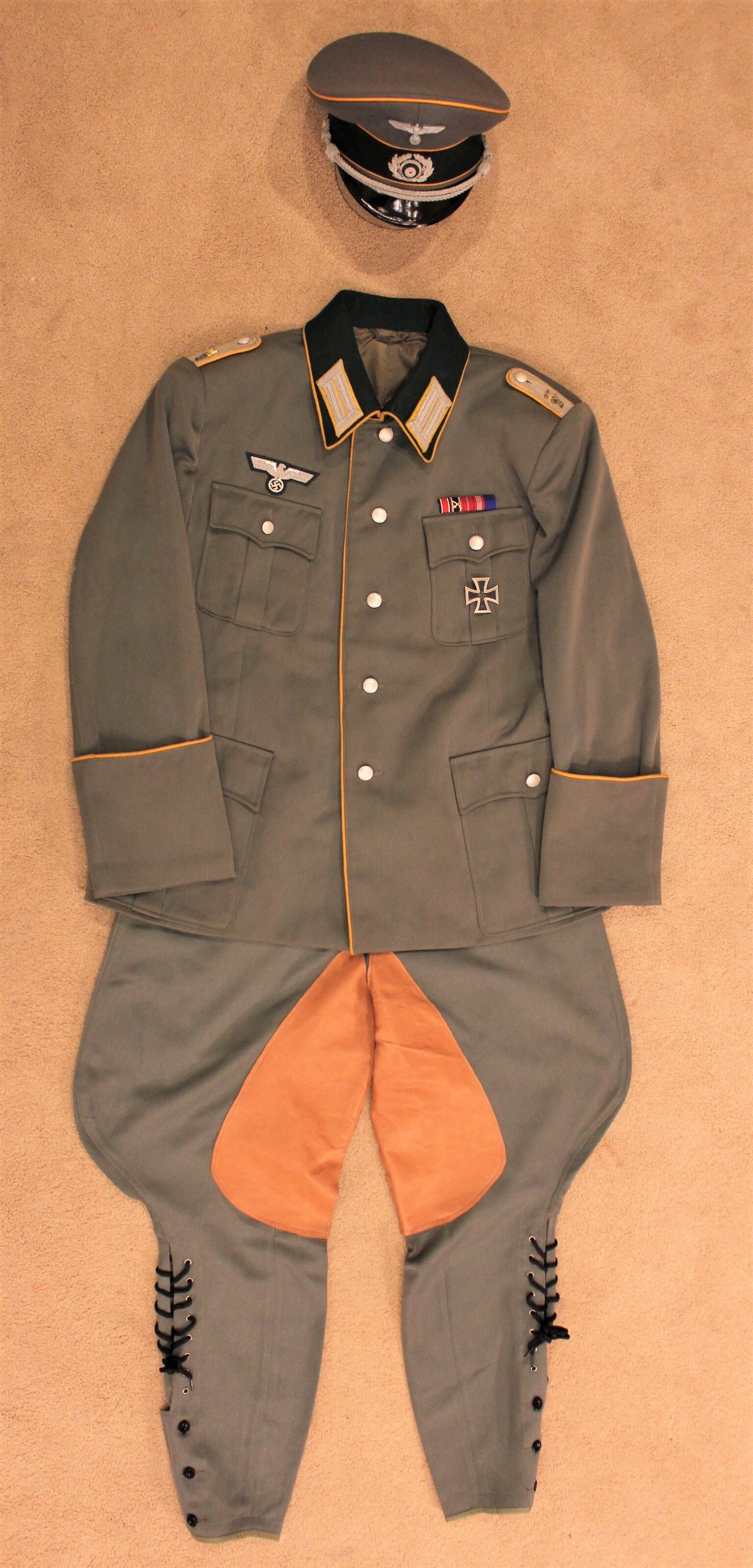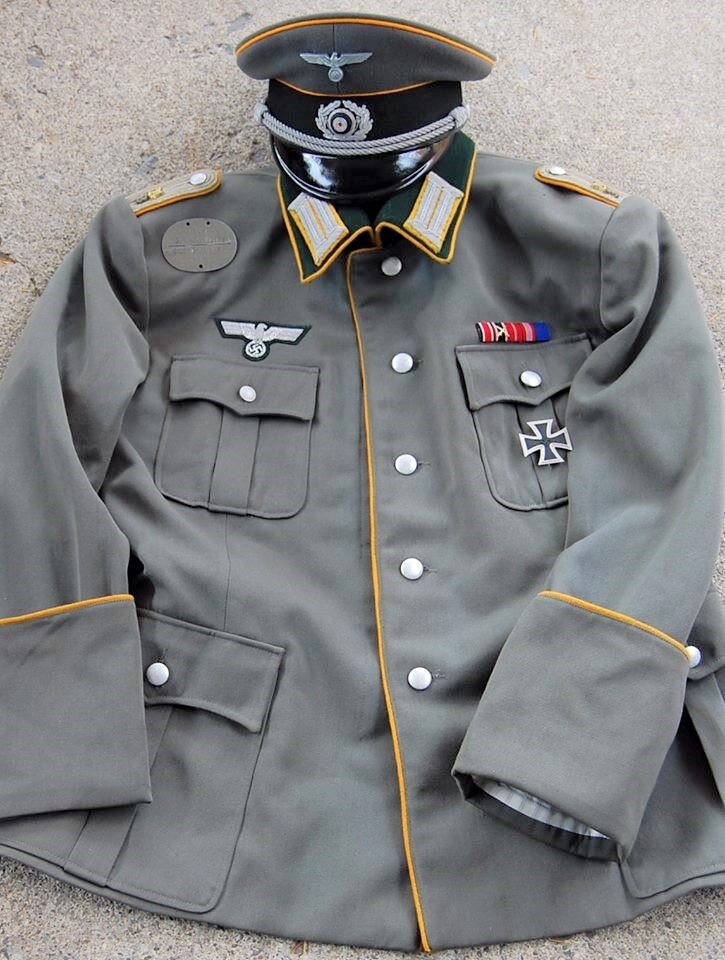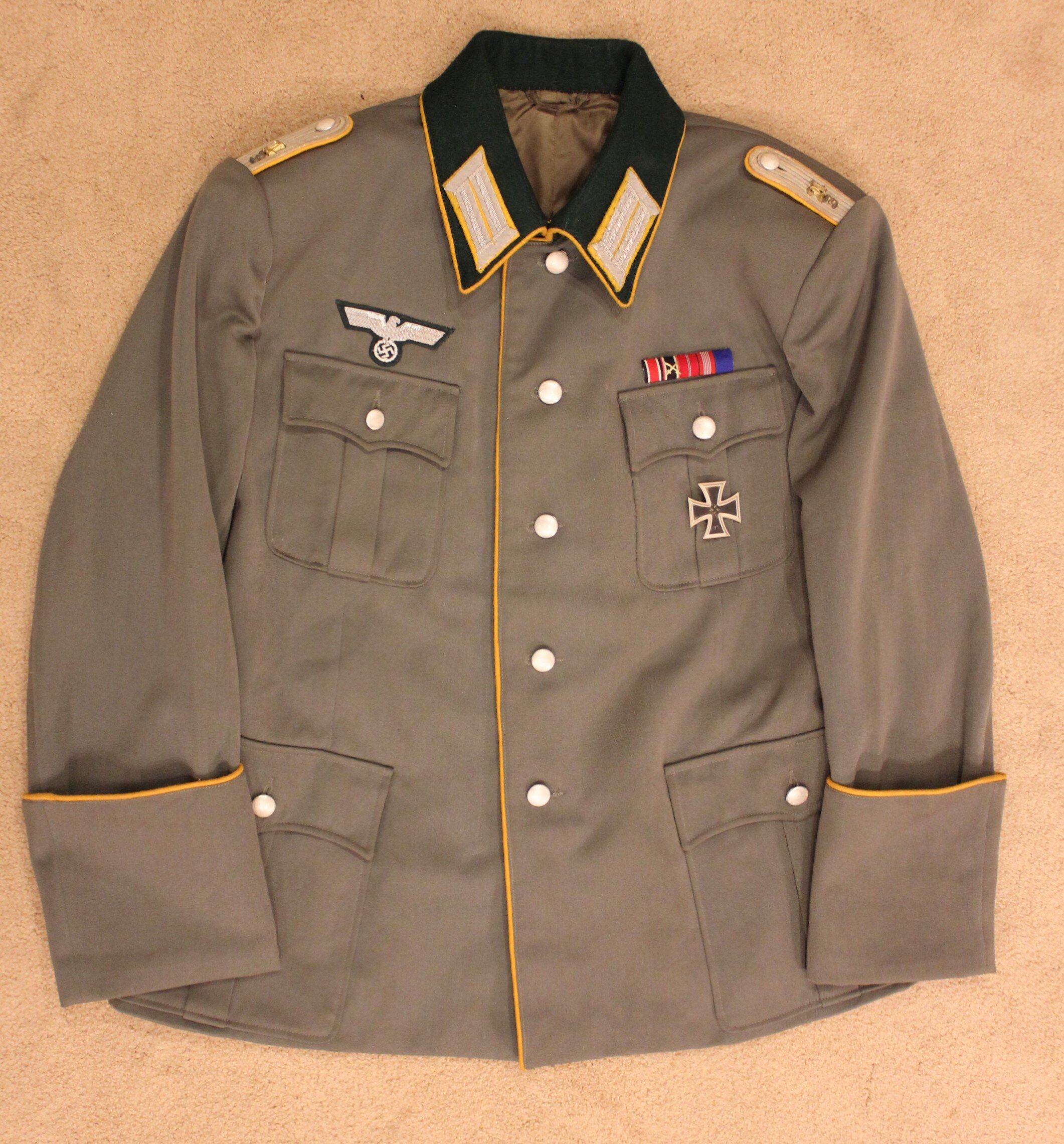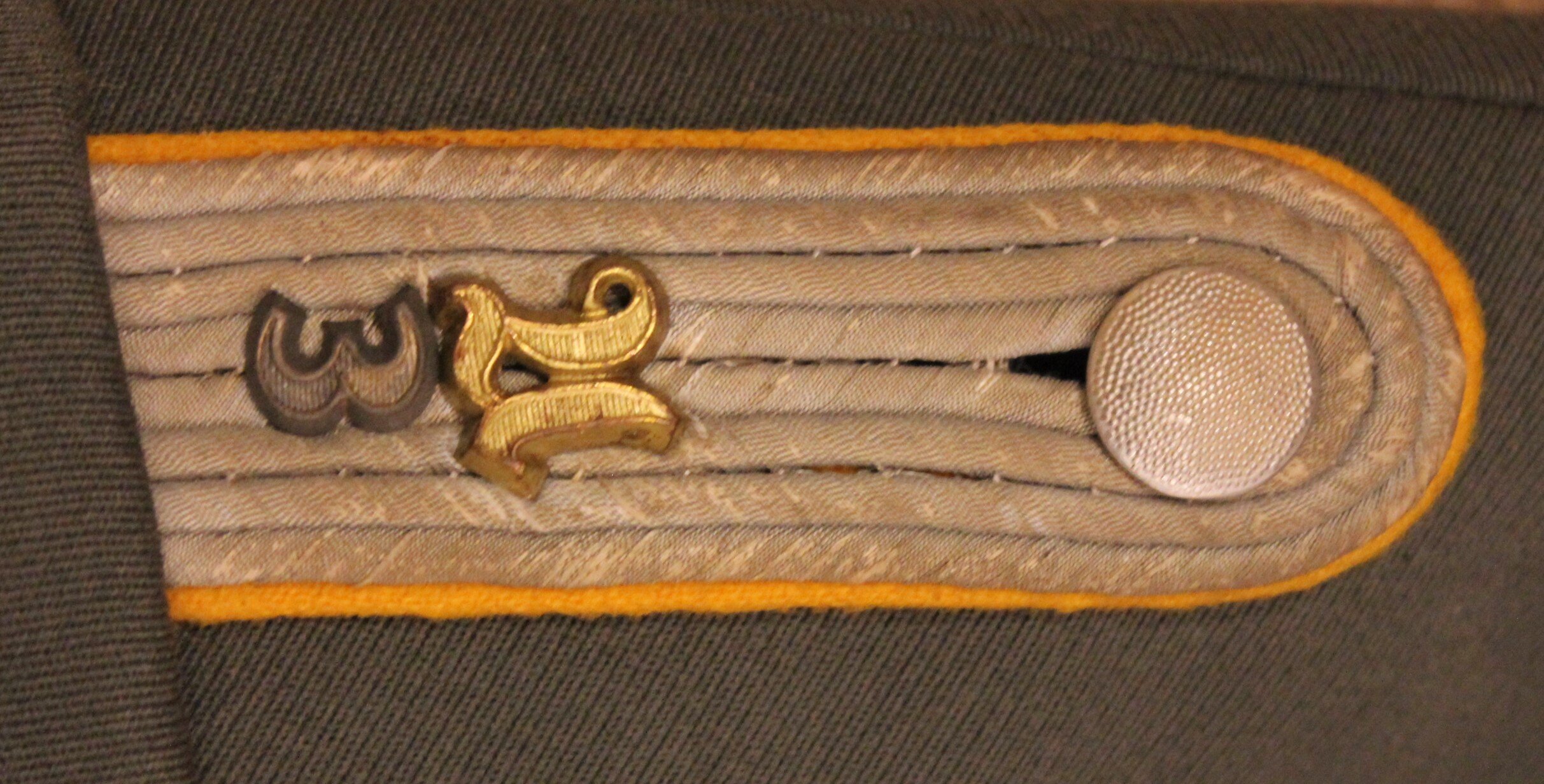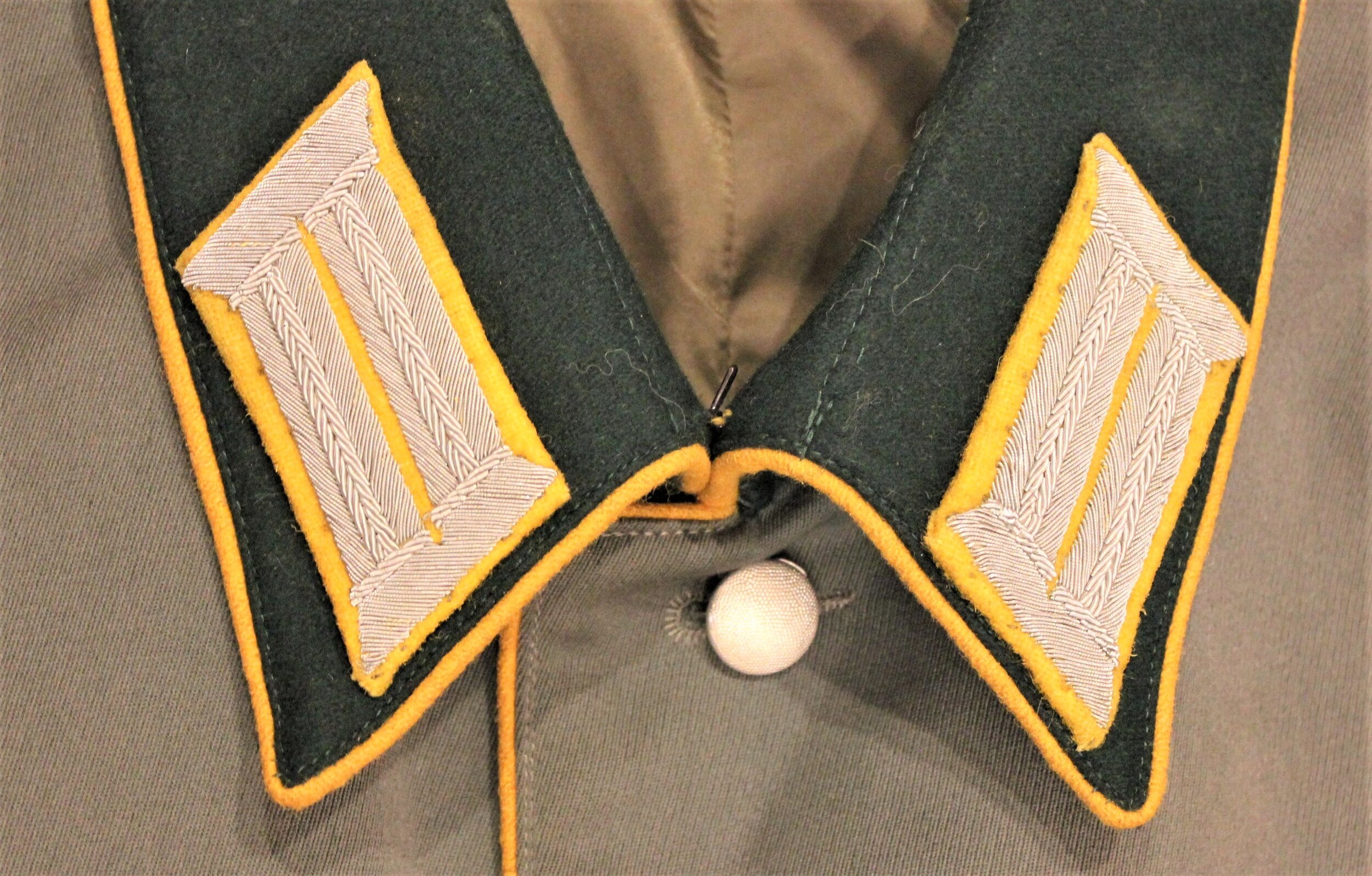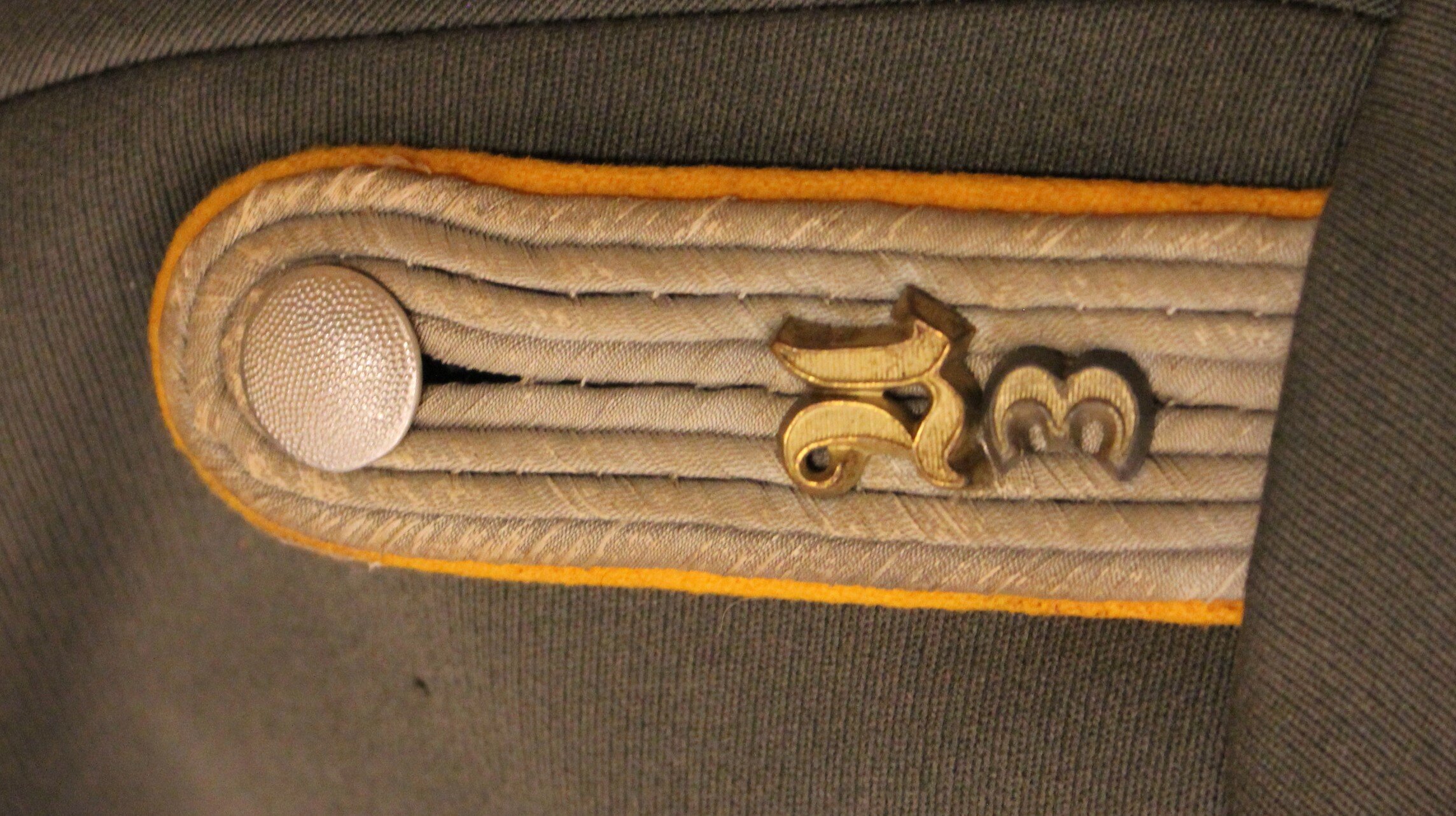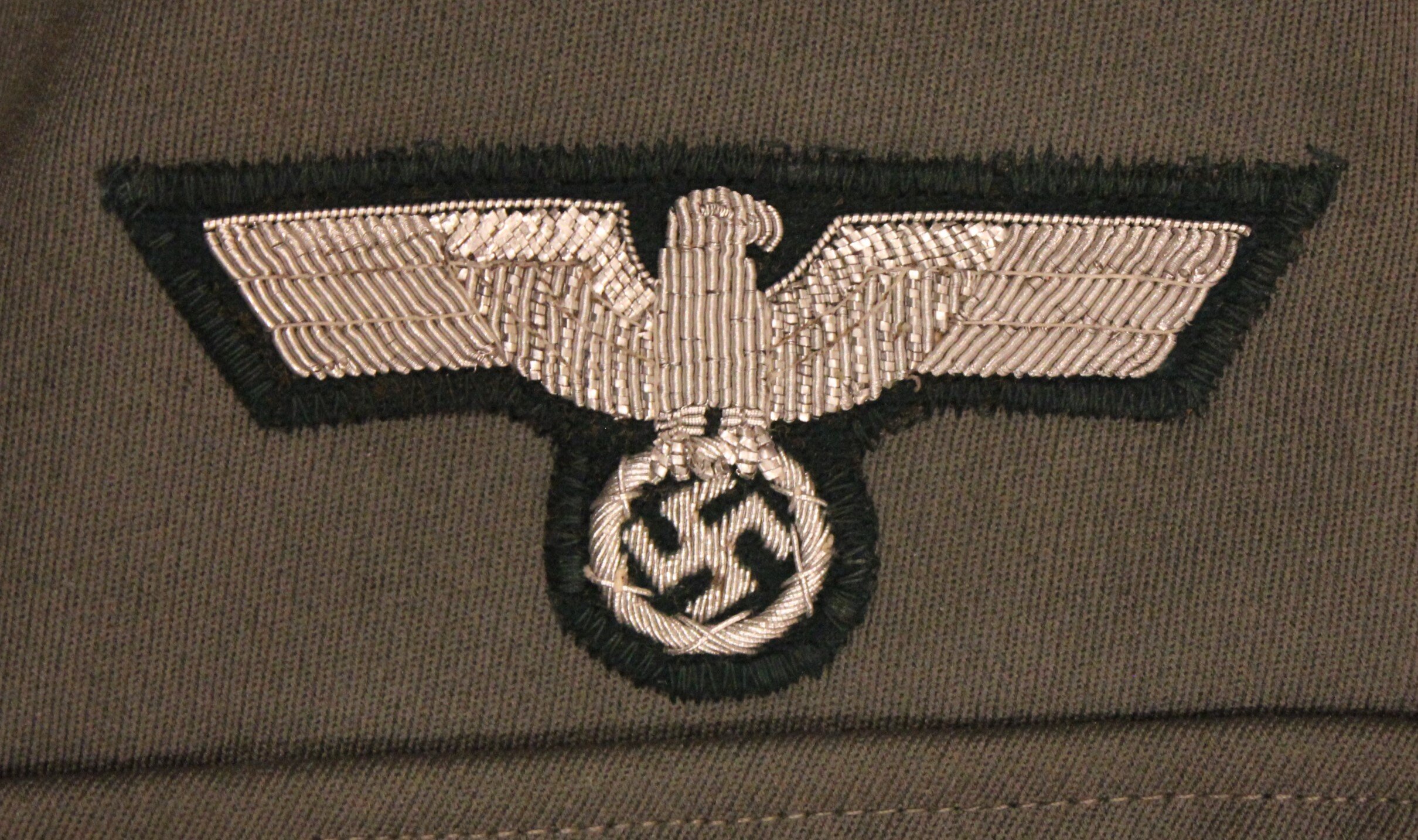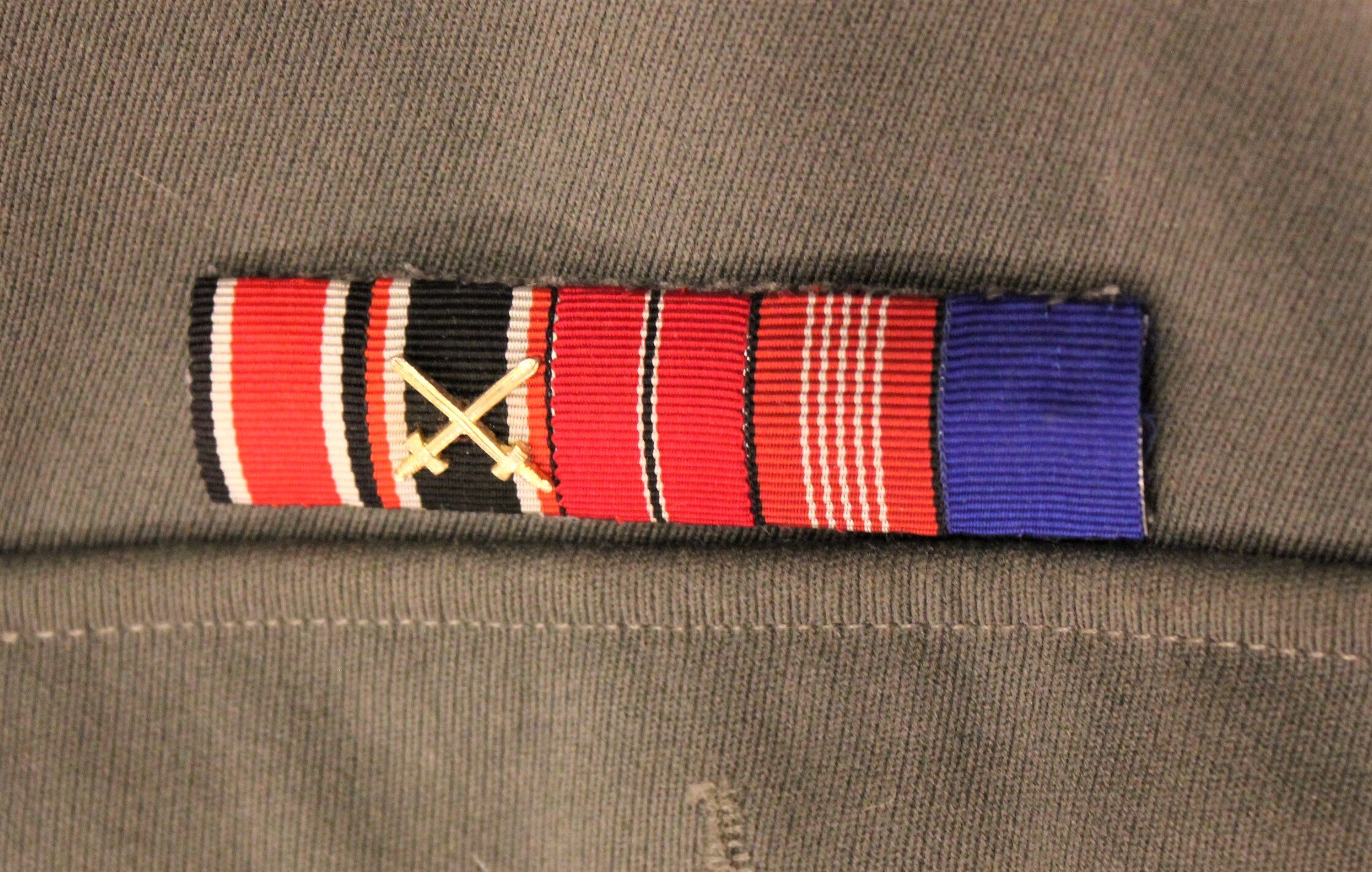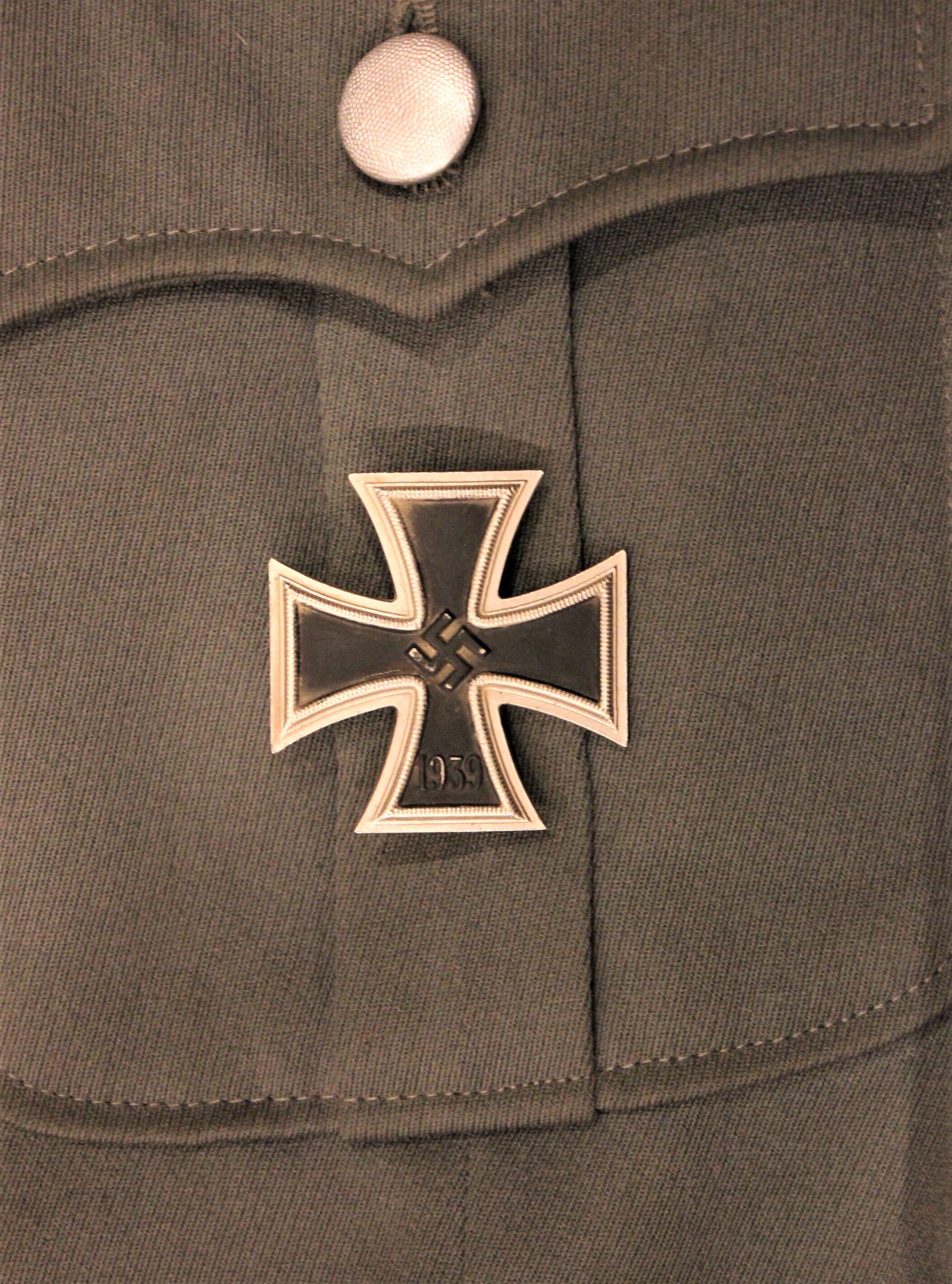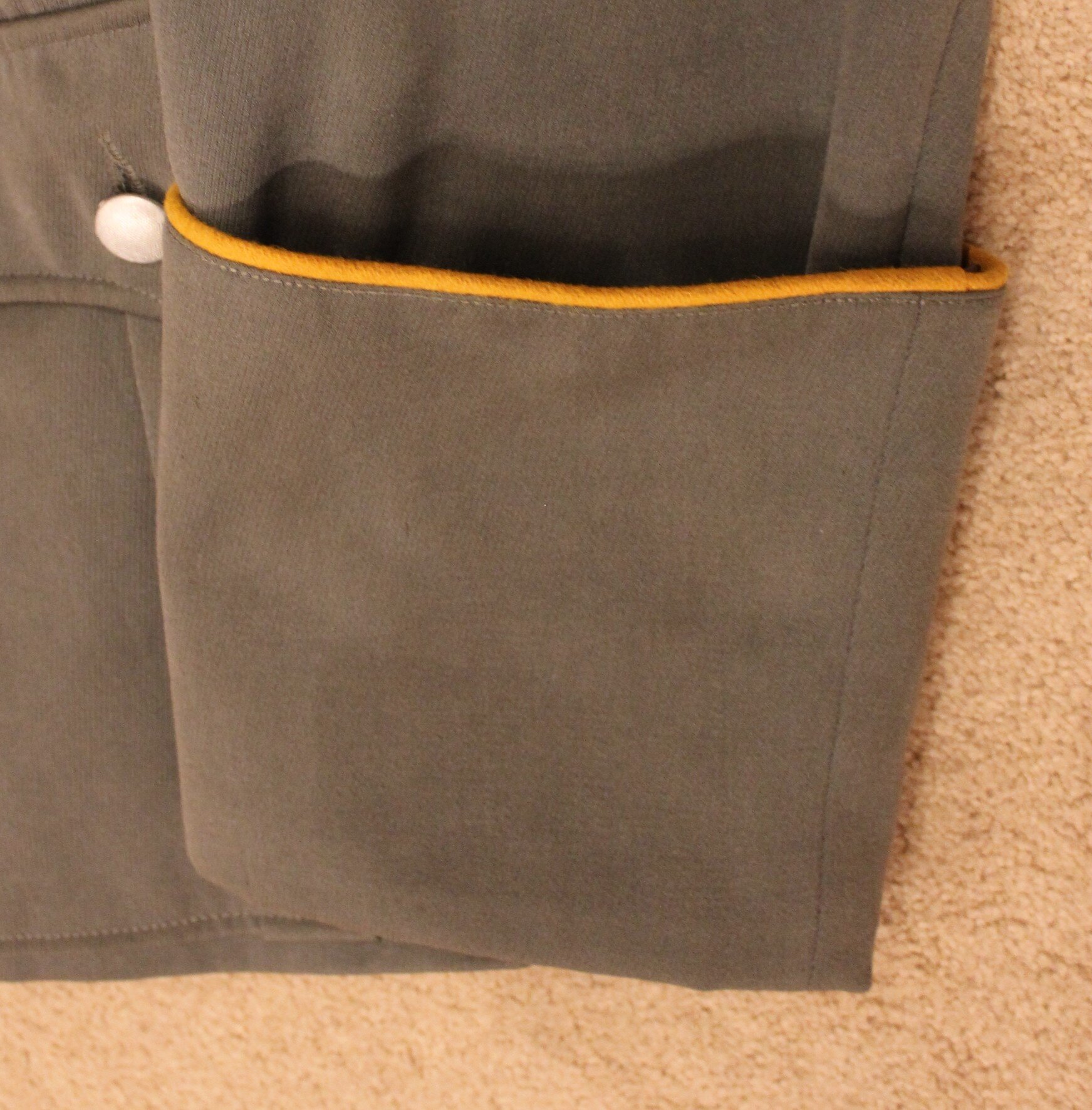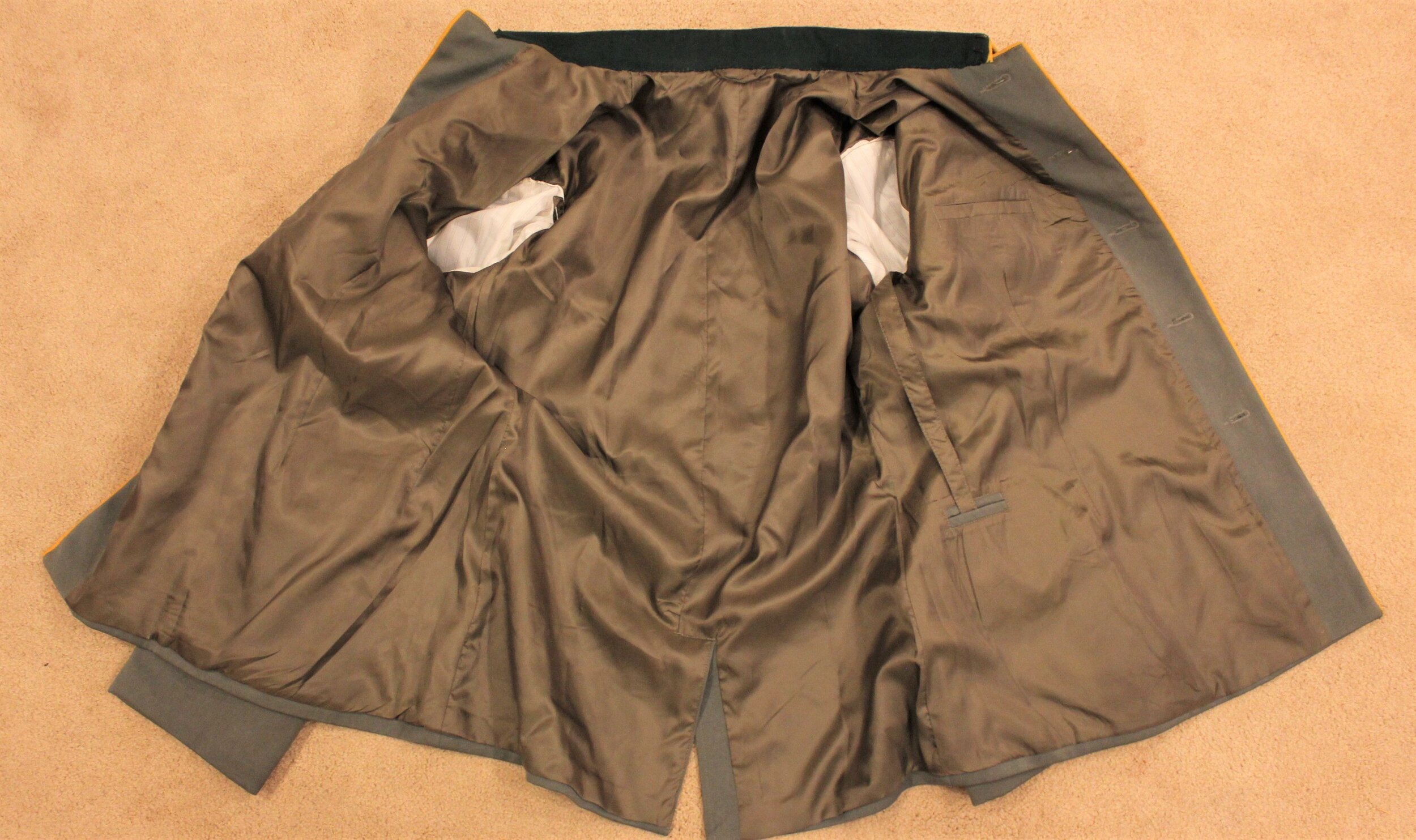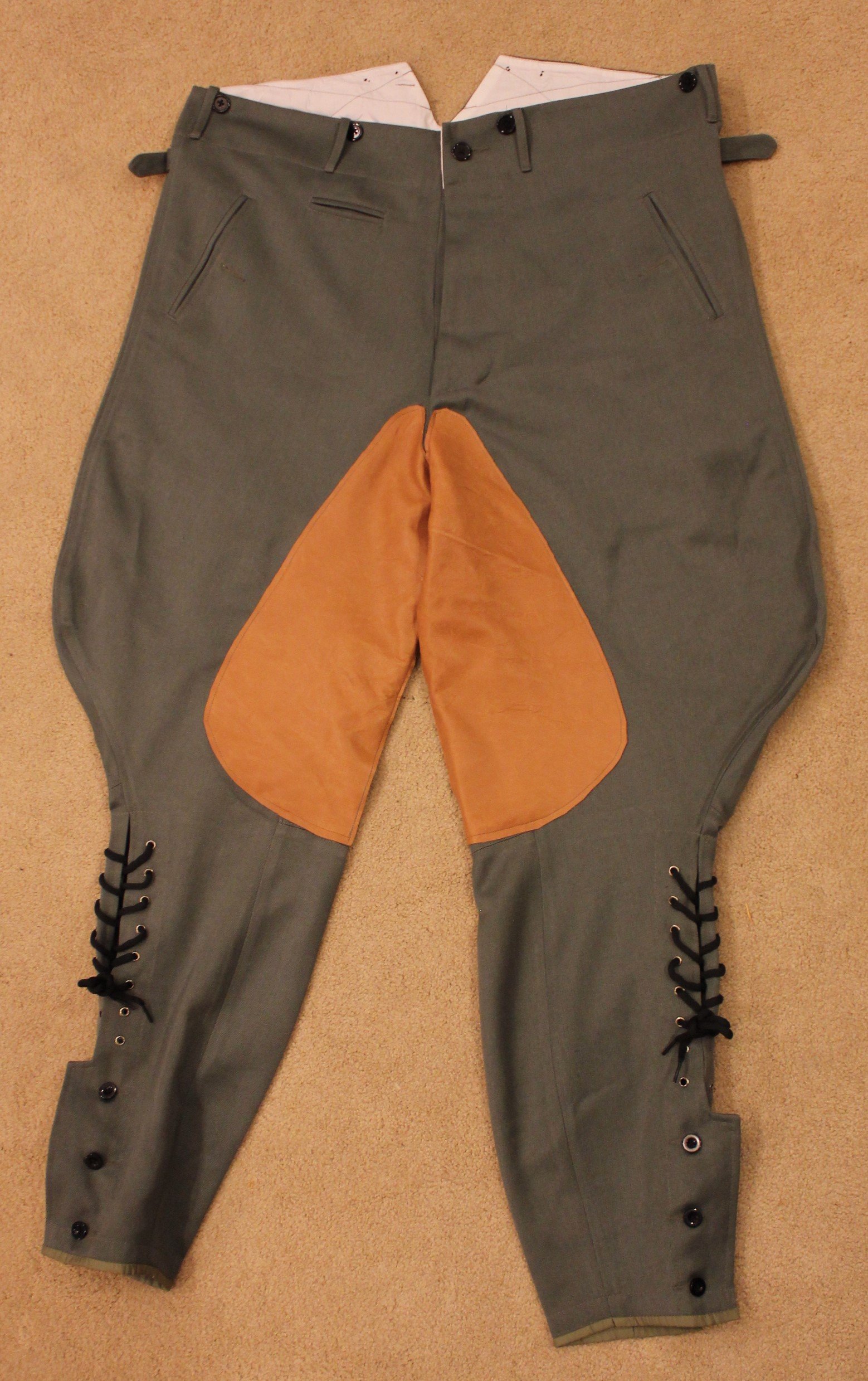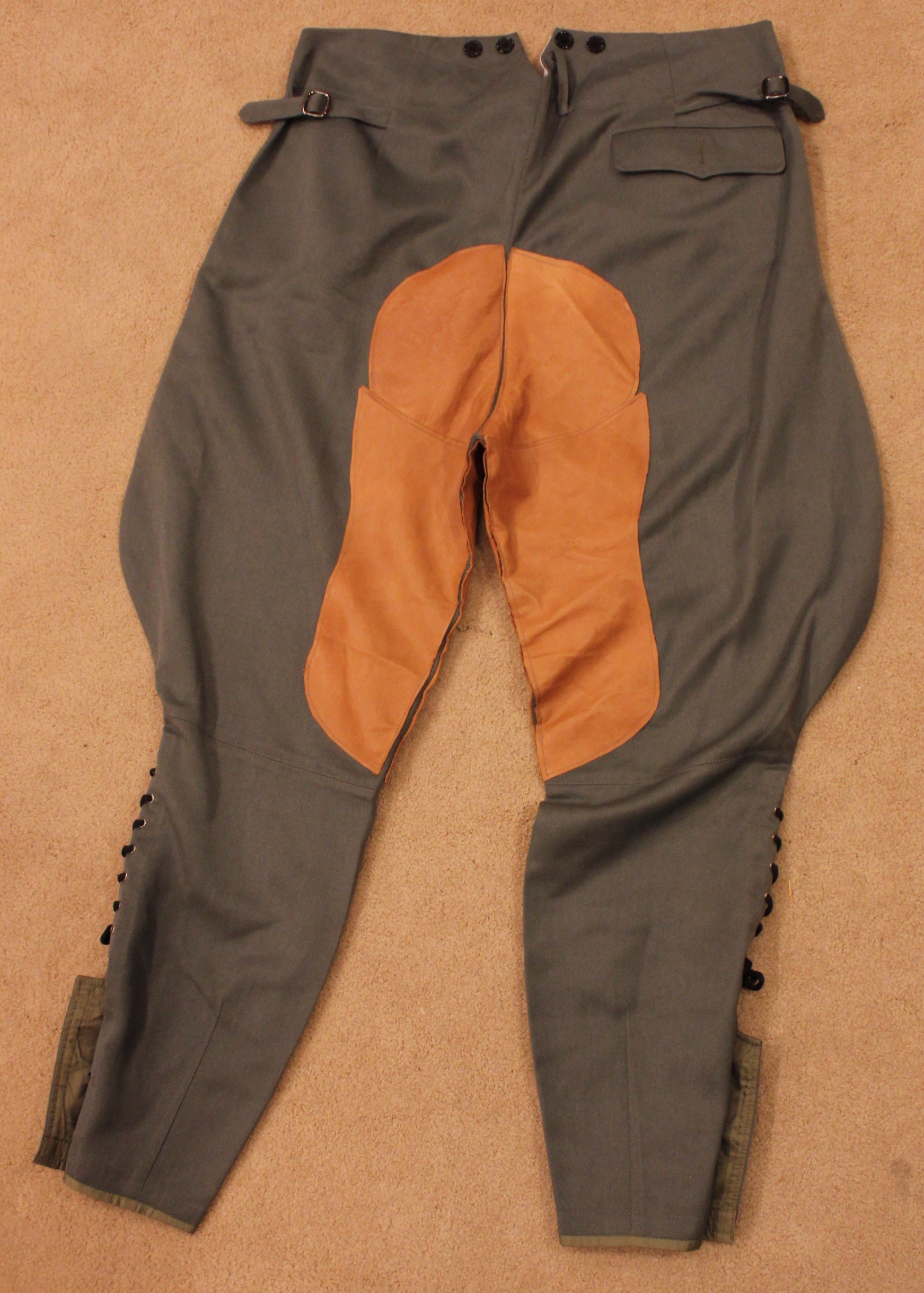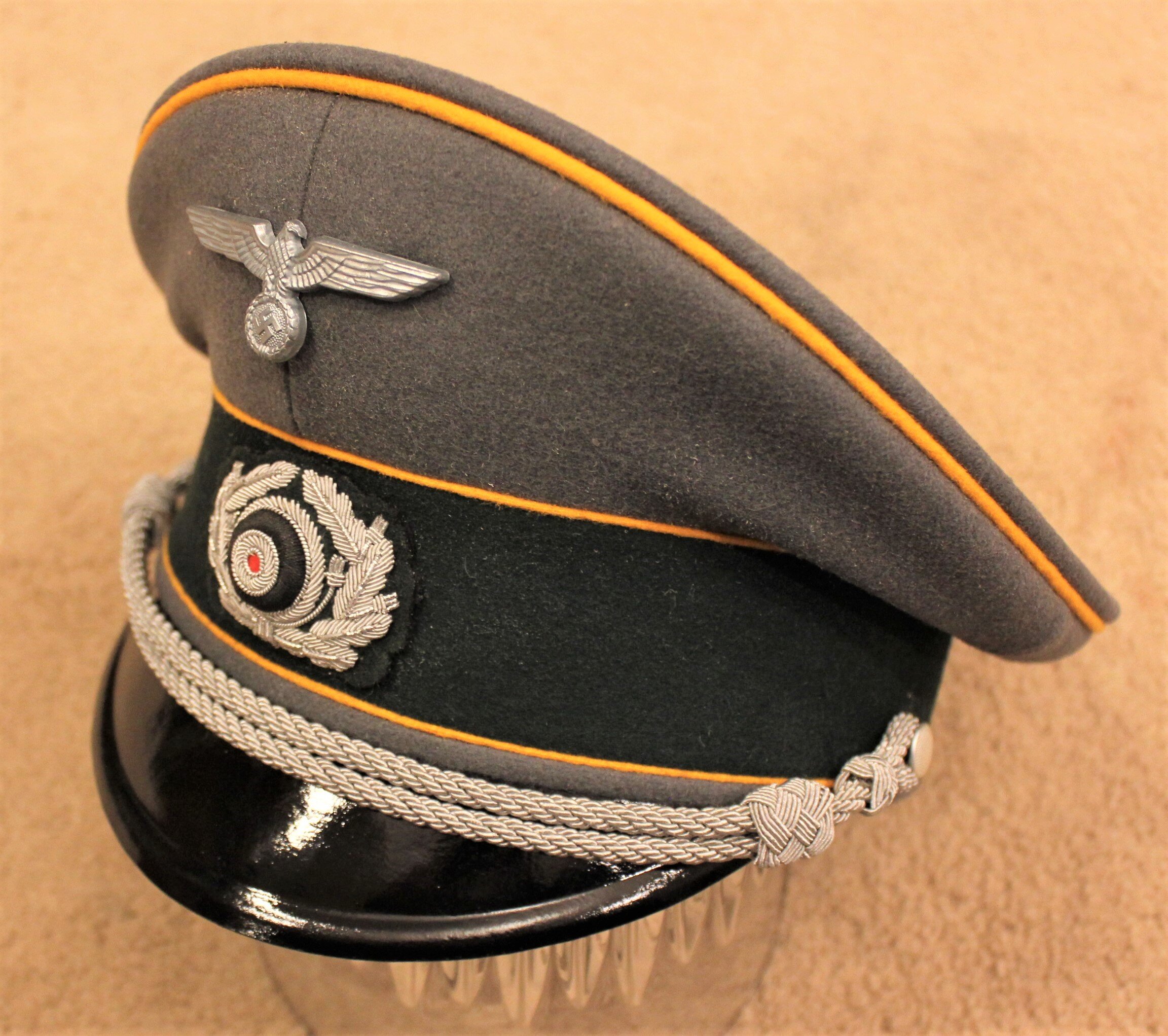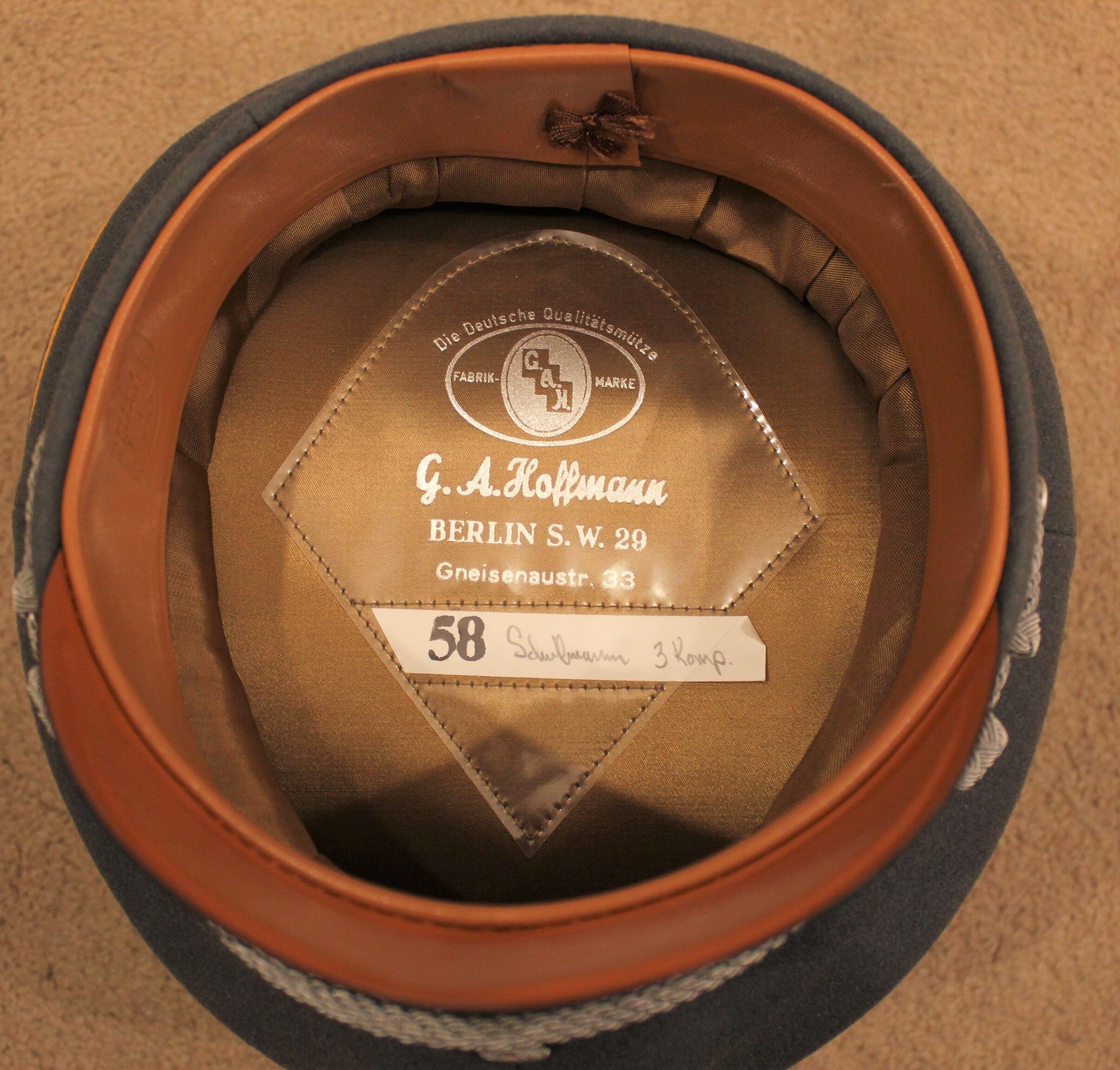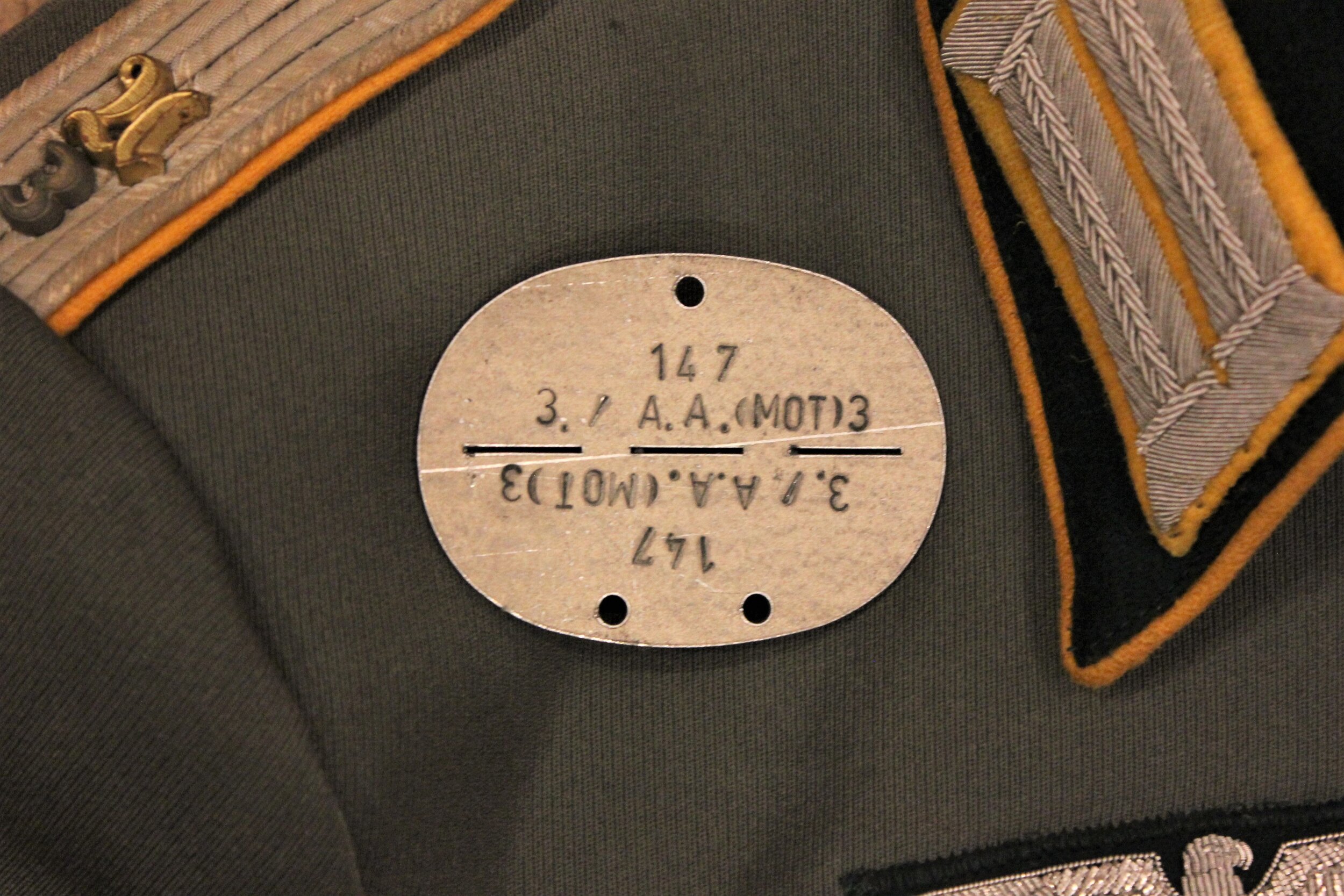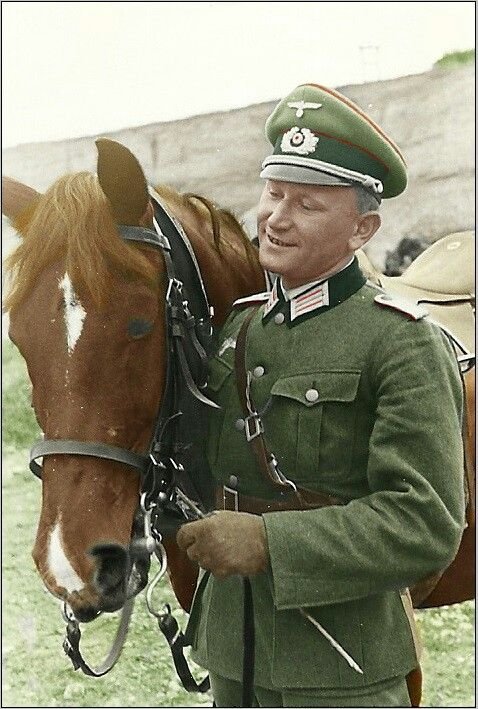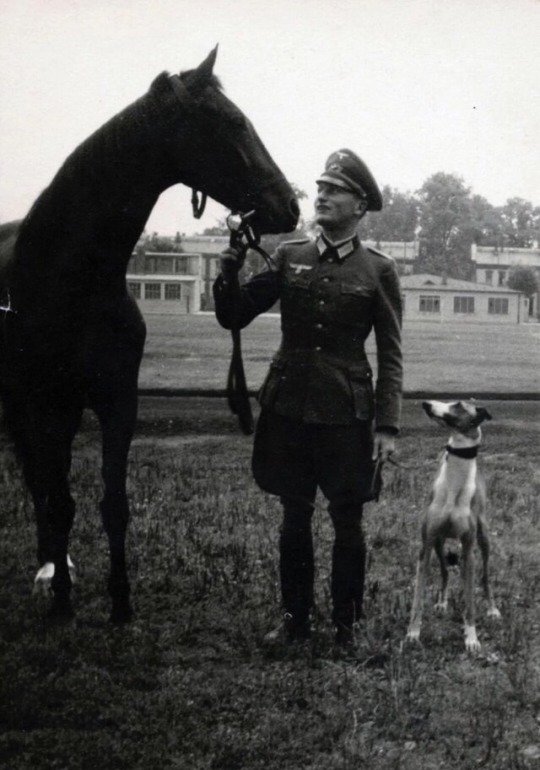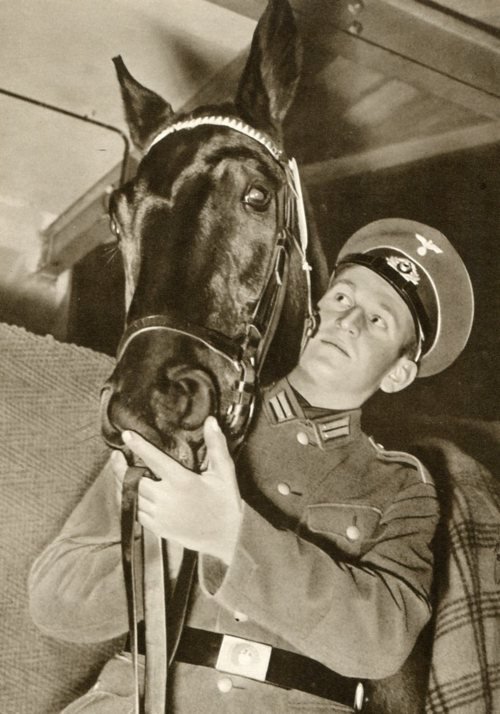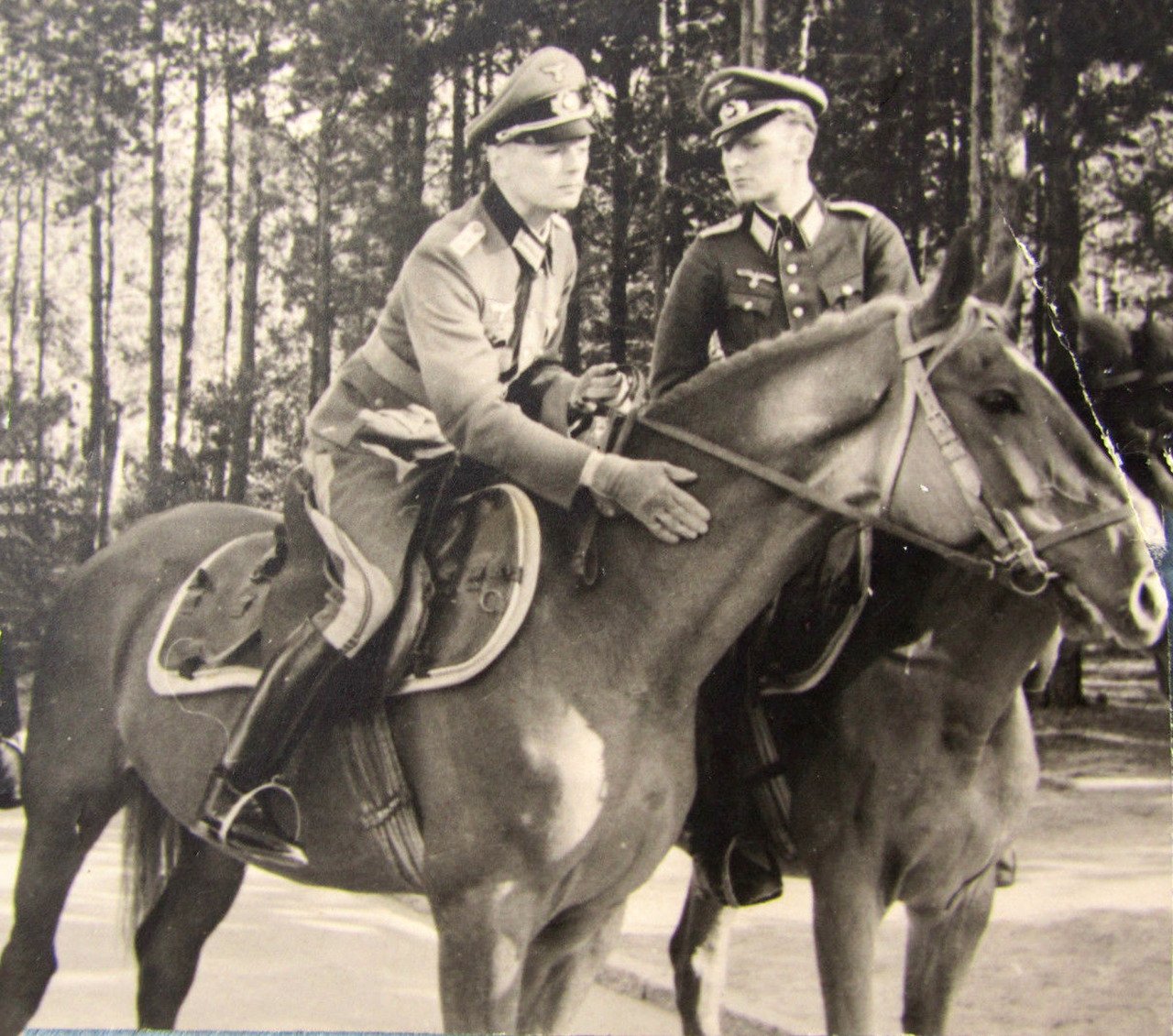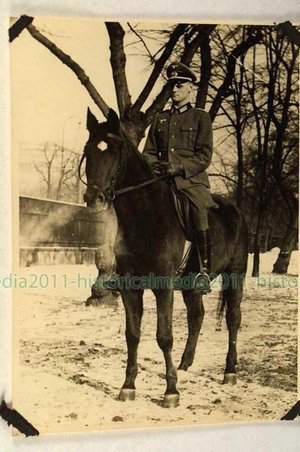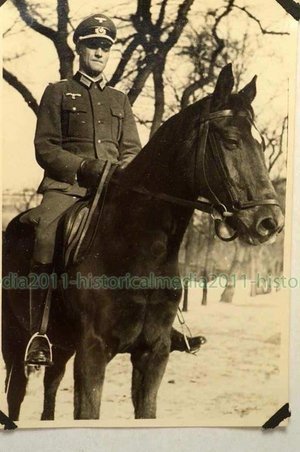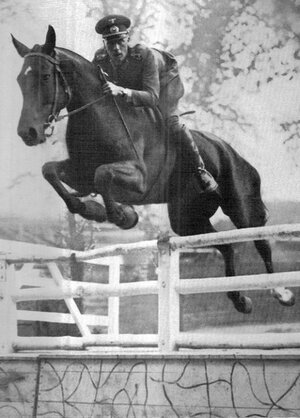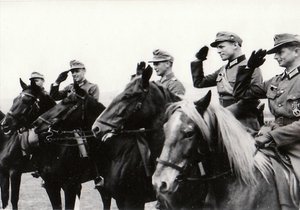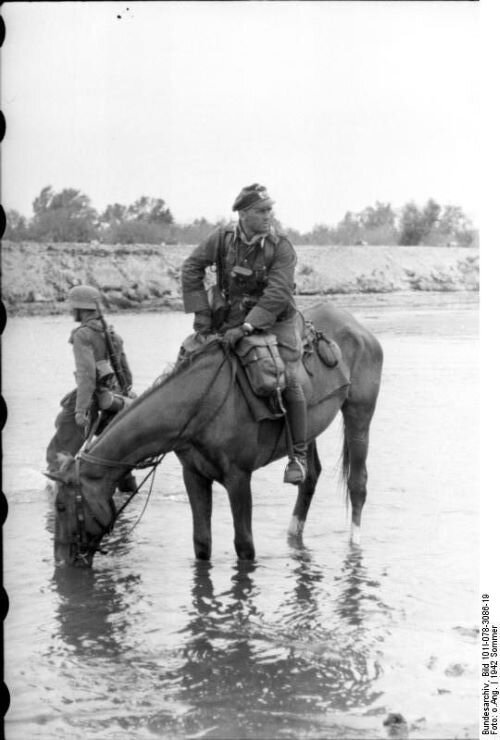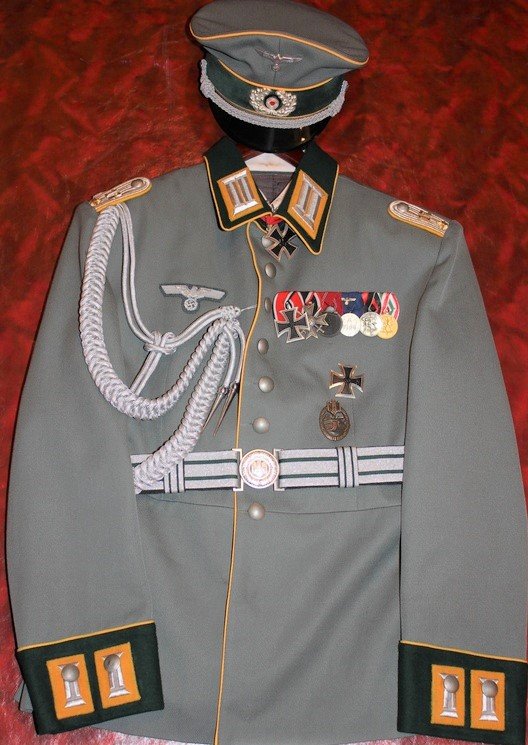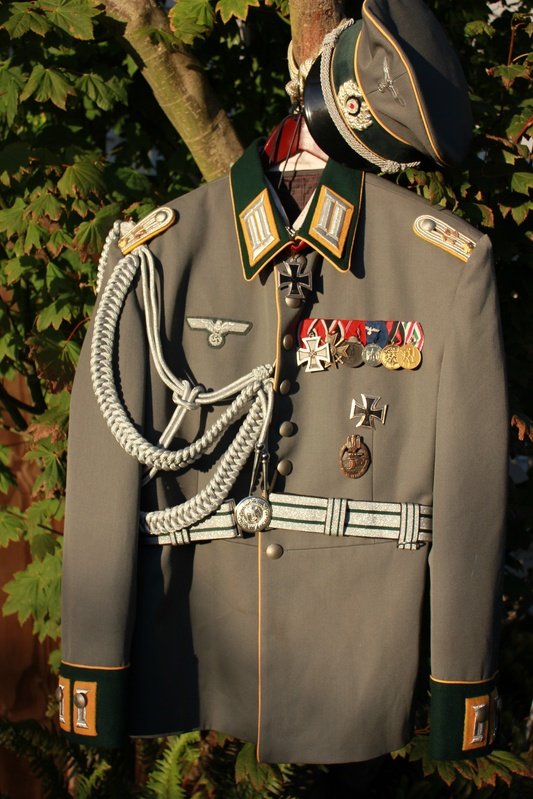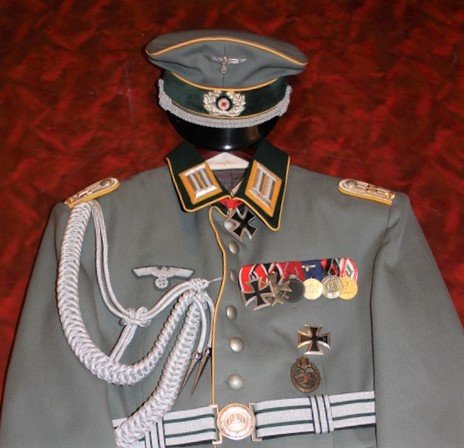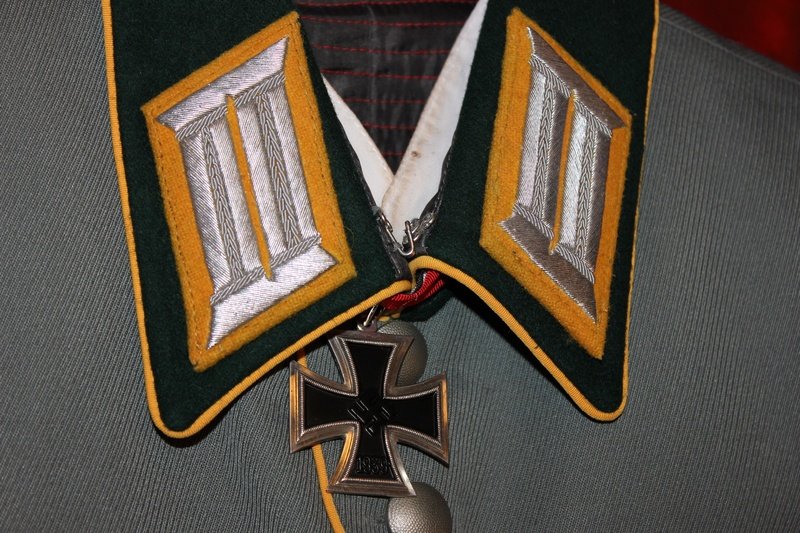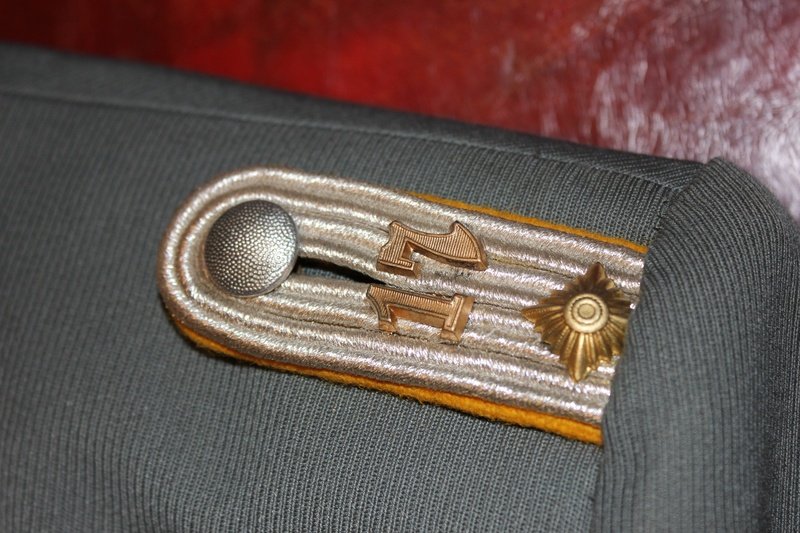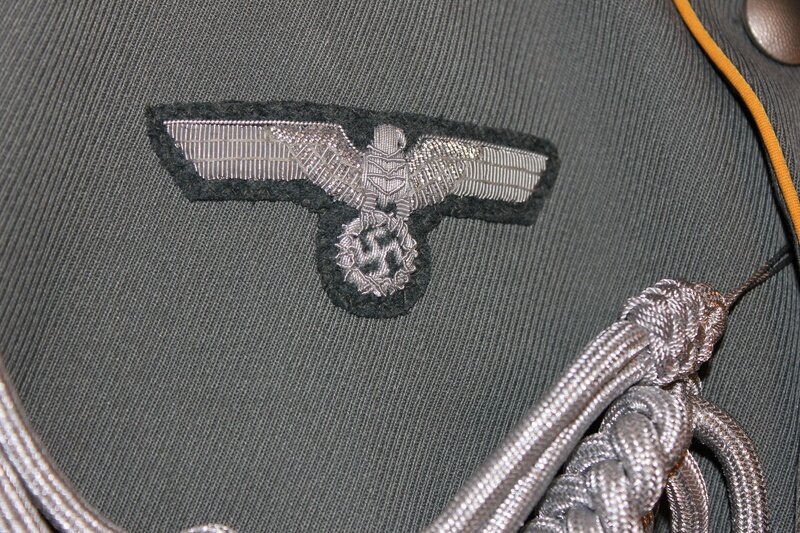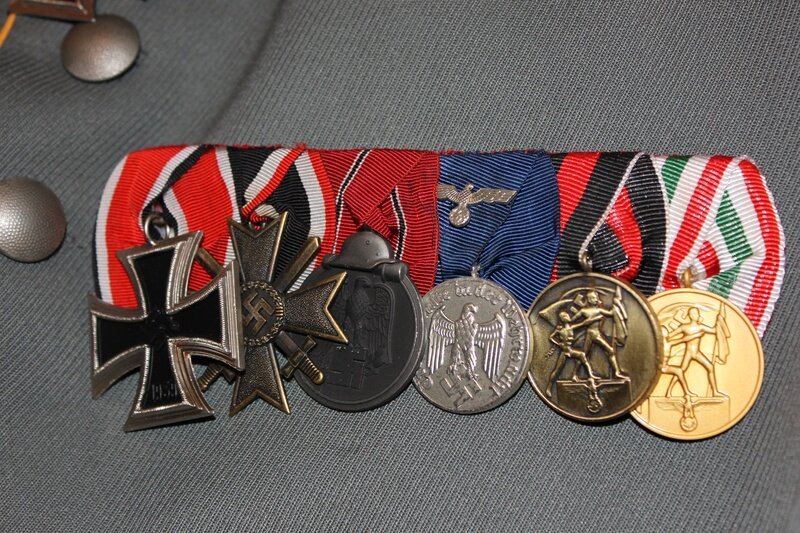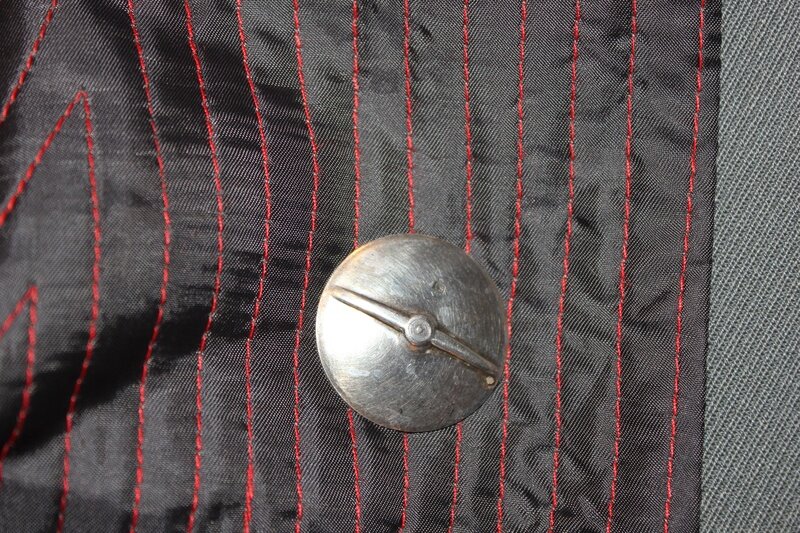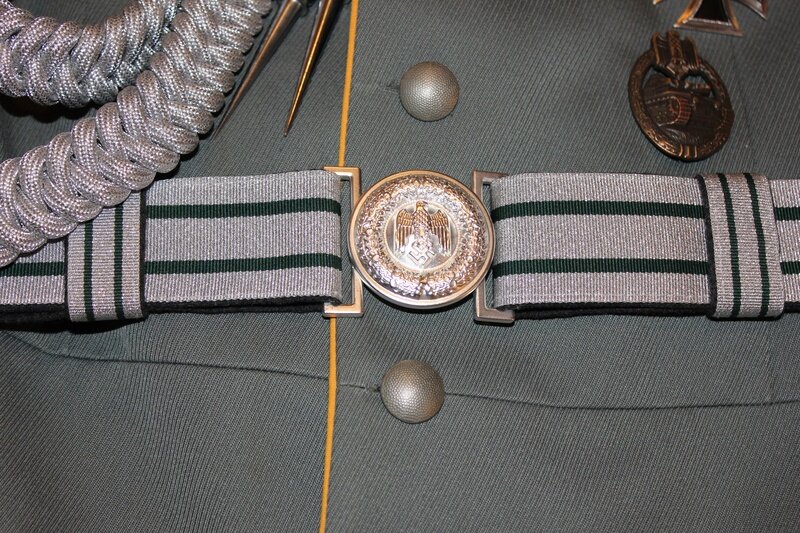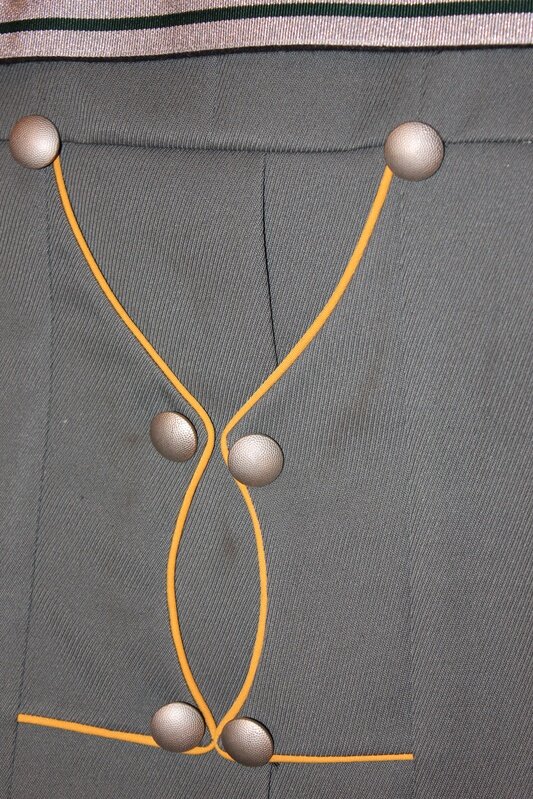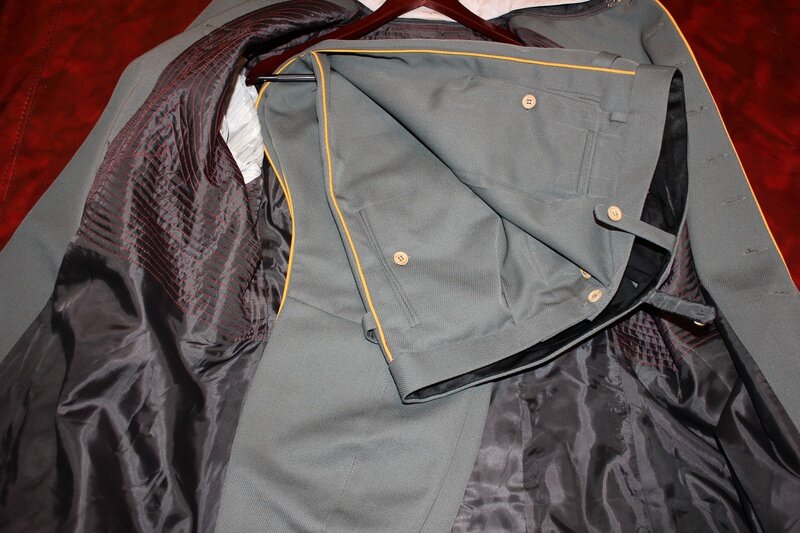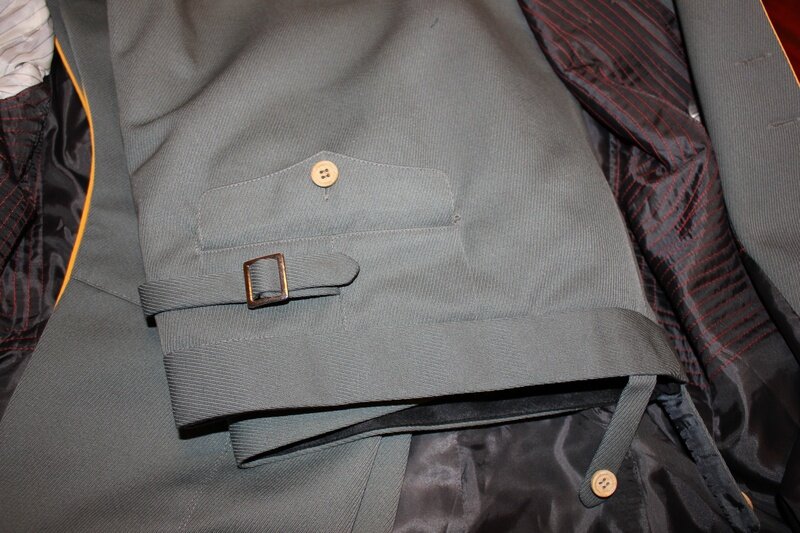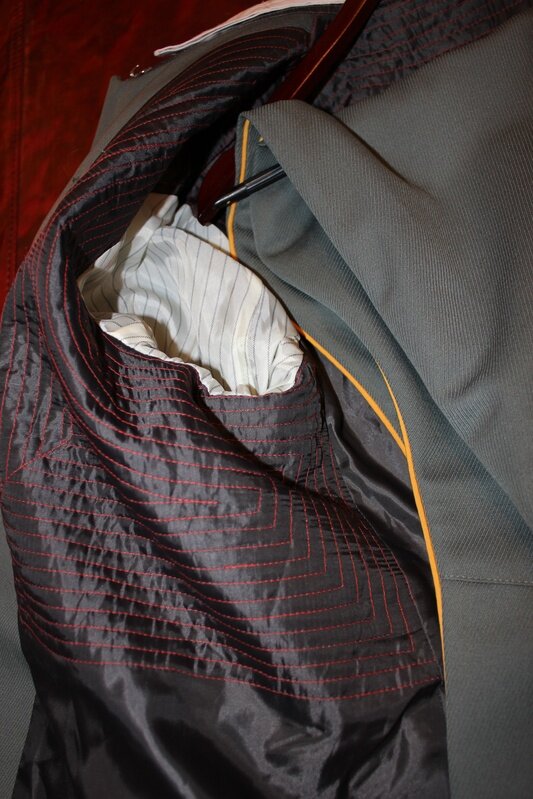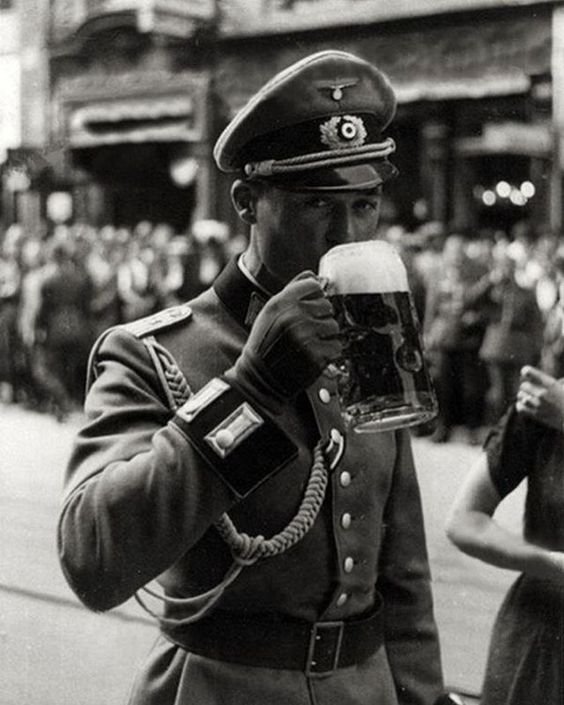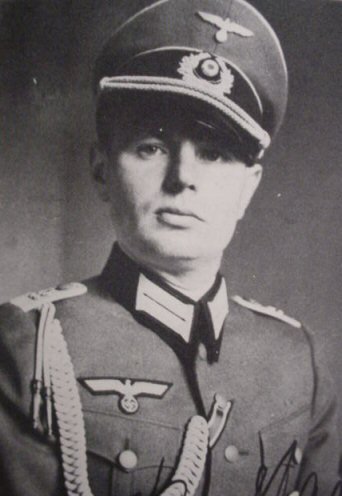Heer Cavalry:
Unteroffizier, Aufklärungs-Abteilung 5, 5. Jäger-Division, Russland 1943:
Initially formed as the 5. Infanterie Division was mobilized in October 1934, it was mobilized in August 1939 and first saw combat in the Battle of France in 1940, followed by occupation duties until March of 1941.
In April 1941, the division was sent to East Prussia to take part in Operation Barbarossa 1941, fighting in the vicinity of Vyazma until the end of the year, when the division was pulled back to France for a two-month refit. Returning to the east in 1942, it remained there fighting and then retreating west, fighting the last battle near Freinwalde near the Oder River in the Battle of Berlin.
The division was reorganized as a Jäger-Division in 1942. The main purpose of the Jäger-Division was to fight in adverse terrain where smaller units were more combat capable than the brute force offered by the standard infantry divisions. The Jäger-Divisions were more heavily equipped than the mountain division, but not as heavily armed as a larger Infanterie Division.
Aufklärungs-Abteilung 5:
Formed in August 1939 in Stuttgart from Kavallerie-Regiment 18, the Abteilung traded horses for bicycles, becoming Radfahr-Abteilung 5 in März 1941. The Abteilung remained on bikes even when renamed Aufklärungs-Abteilung 5 in the spring of 1943. While most of the troops were on bicycles, motorcycles with sidecars carried mortar and heavy machine gun elements. The bikes made this group one of the fastest-moving divisional units, and they often were used as a quick reaction force as well as for reconnaissance.
Hauptmann, 5th Kavallerie Regiment,”Feldmarshall von Mackensen”:
This Hauptman wears a very late uniform, which bears the final double-horse head shield of the 4th and 5th Regiments. His cap and his shoulder boards have the Kavallry dark golden yellow piping on them, the boards having the jawless Hussar’s skull worn by tradition for the 5th and 11th Squadrons of the 5th Regiment.
On the right sleeve cuff is the ‘Cuff Title’ “Feldmarshall v. Mackensen” which was awarded to the unit on his Birthday in 1944. Shown by his awards and decorations, this Hauptmann has been in combat since the war started.
The Iron Cross 1st and 2nd class displays his leadership skills in battle. He has been in several engagements, demonstrated by his numbered General Assault Badge and the Close Combat Clasp. He has been wounded at least four times! And he was a riding master. As a young officer, he served in the early campaigns as well as the first Russian Winter battles.
He wears leather-seat riding breeches with boots to complete this uniform.
Leutnant, Aufklärungs-Abteilung 3, 1939, walking out dress:
The Aufklärungs-Abteilung was the eyes and ears of the division. Pre- and early-war Abteilung were equipped with motorcycles, Kübelwagens, and light armored cars.
3. Panzer Division was formed on 15 October 1935 from elements of 1. u. 3. Kavallerie Division as well as a variety of other military and police units, and was headquartered in the German capital, Berlin. Germany had renounced the Treaty of Versailles, which had forbidden the country from having tank forces. Germany had violated this treaty almost from the start by secretly developing tanks and operating a covert Panzerschule in the Soviet Union.
Members of the division’s tank regiment participated in the Spanish Civil War as part of the Legion Condor. The division also took part in the Austrian Anschluss. The division participated in the Polish Campaigns, where it was the most numerically powerful Panzer division with 391 tanks. In May 1940, it was part of the Battle of France and was then reorganized to support the expansion of Panzer divisions.
Later in 1940, the division received orders to prepare for service in Libya, North Africa,a that same year to help support the Italian efforts there. The deployment was canceled by Hitler after Mussolini launched the invasion of Greece and order the 3rd diverted to the proposed invasion of Gibraltar known as Operation Felix, though the operation was never initiated. Part of Operation Barbarossa in June 1941, fighting as part of Armee Gruppe Center and Süd, suffering heavy casualties, the division fought at Kursk and remained on the Eastern Front until the end of the war.
The Geschmüekte Feldbluse or piped service dress was established in Juli 1937 and is worn at formal occasions. It can be worn with matching piped Langhose or, in the case of the Kavallerie, with Reithose u. Stiefel. The Leutnant wears a Schirmmütze and brocade dress belt.
Kavallerie Rgt. 17, Waffenrock, 2nd Lieutenant:
This is the parade-dress uniform, only used for big events, like parades or the presence of the Führer. The lieutenant’s uniform has golden yellow piping on the collar, boards, and front flap, and matching trousers. The stand and fall caller is in the dark bottle green color and has large wire-bullion yellow-backed collar tabs applied to it. The uniform carries its silver Officer Aguelette and Brocade belt. The shoulder boards have a set of gilt 17s on each, referring to the regiment he had been a part of. He likely had no sidearm but did wear black shoes, rather than his preferred boots. His French cuffs have the cavalry insignia applied to them in Waffenrock fashion. He wears a full display of the medals bar, including the Iron Cross 2nd class, War Merit Cross with swords, East Front “Frozen-Meat”, Long Service, Sudettenland, and Africa service ribbons on it. The uniform is topped off with a fine Officer-Schirmmütz Cap.

